Shelf-stable food manufacturing in northern Australia and the Asia-Pacific OFFICIAL PUBLICATION
Future food security depends on strategic innovation of food systems & &


Backing food product claims with evidence
New applications for extrusion cooking technology
ISSN 1032 5298 • PRINT POST APPROVED PP241613/00096 VOL 76 ISSUE 2
APRIL – JUNE 2024
OF AIFST
TRANSFORMING FOOD SAFETY: THE
POWER OF CONNECTED PEST CONTROL TECHNOLOGY

In the rapidly evolving food and beverage industry, maintaining impeccable hygiene and safety standards is paramount. Traditional pest control methods, while effective, often fall short in meeting the dynamic needs of modern manufacturing. This is where
Connected Pest Control Technology steps in, offering a revolutionary approach that addresses the industry's most pressing challenges.
Revolutionising Pest Management
Connected Pest Control Technology leverages the latest advancements in technology to offer a smarter, more efficient approach to pest management. This system utilises a network of sensors and devices interconnected through the Internet of Things (IoT), providing real-time monitoring and data analysis. This proactive approach enables early detection and swift action, minimising the risk of infestations and ensuring uninterrupted operations.
Addressing Pain Points
One of the primary concerns in food manufacturing is avoiding disruptions that can lead to production halts or product contamination. Traditional methods often rely on periodic inspections and can miss early
signs of pest activity. Connected technology addresses this gap by offering continuous surveillance, ensuring that any potential issue is identified and addressed promptly.
Enhanced Detection and Precision
This technology can detect the slightest signs of pest presence through advanced sensors and IoT devices. This level of precision is unprecedented in the industry and allows for targeted interventions, greatly reducing the need for broadspectrum chemical treatments and supporting a more sustainable approach to pest control.
Data-Driven Insights
The integration of big data and analytics transforms pest control from a reactive task to a strategic operation. By analysing trends and patterns, facilities can anticipate potential problems and take preemptive measures. This datadriven approach enhances the effectiveness of pest control measures and aids in regulatory compliance and quality assurance.
Sneak Peek into Future Developments
As impressive as current technologies are, the future of Connected Pest Control Technology promises
even greater advancements. The integration of AI and machine learning will enable systems to predict and prevent pest activity with greater accuracy.
• AI and Machine Learning: These technologies offer predictive analysis, identifying potential risks before they become issues. By learning from historical data, AI can forecast future infestations, allowing facilities to take preventative measures in advance.
• Advanced Camera Technology:
The future will see the widespread adoption of camera systems equipped with sophisticated image recognition software. These cameras will continuously scan for signs of pests, providing alerts in real-time and allowing for immediate action. This level of monitoring ensures a virtually impenetrable defence against pestrelated threats.
The integration of Connected Pest Control Technology is a gamechanger for the food and beverage industry. It represents a shift from traditional, reactive methods to a proactive, data-driven approach that is more efficient, effective, and sustainable. As technology continues to evolve, we can expect even more innovative solutions to emerge, further enhancing the safety and reliability of our food supply.
Embrace the Future of Pest Control
To learn how your business can benefit from these cutting-edge pest control solutions, contact us for a comprehensive evaluation and tailored strategy.
Phone: 1300 306 148
Email: customer-care-au@ rentokil-initial.com
Website: www.rentokil.com/au

ADVERTORIAL 2 food australia





IN THIS ISSUE
08 Tipping the scale - QUT’s pilot manufacturing plant for innovative foods
Providing critical manufacturing capability
10 New applications continue to grow for extrusion cooking technology
New uses for a mature technology
12 How sourdough can teach us to make IBS-friendly bread
Novel applications for traditional methods
14 Backing food product claims with evidence
Using data to enable innovation and support reputation
20 Future food security depends on strategic innovation of food systems
A new, enhanced definition of food security brings a systems based approach to transformation
24 Australian Food Safety Auditor Development Project: cross-industry collaboration New program looks to create pipeline for careers in auditing
26 Tea and anxiety: can this ancient drink reduce our stress levels?
A look at the nutraceutical potential of this popular beverage
30 Key legal and regulatory trends for 2024
Insight into potential developments which could impact the sector
32 The Mediterranean diet – it’s a whole lot more than olive oil
Unpacking this popular dietary pattern
35 The ongoing impact of a foodborne illness
With the potential for serious long-term health implications, foodborne illness needs to be taken seriously
38 Tackling Australia’s three million tonnes of annual fresh produce waste
Industry action plans designed to reduce waste from farm to retail
40 In search of perfect biotics: from fermentation to postbiotics
Prebiotics, probiotics and postbiotics - what are they and where is the science up to?
43 What do Quality Assurance professionals do?
Insight into the world of quality assurance
44 Shelf-stable food manufacturing in northern Australia and the Asia-Pacific
The case for a regional food processing capability
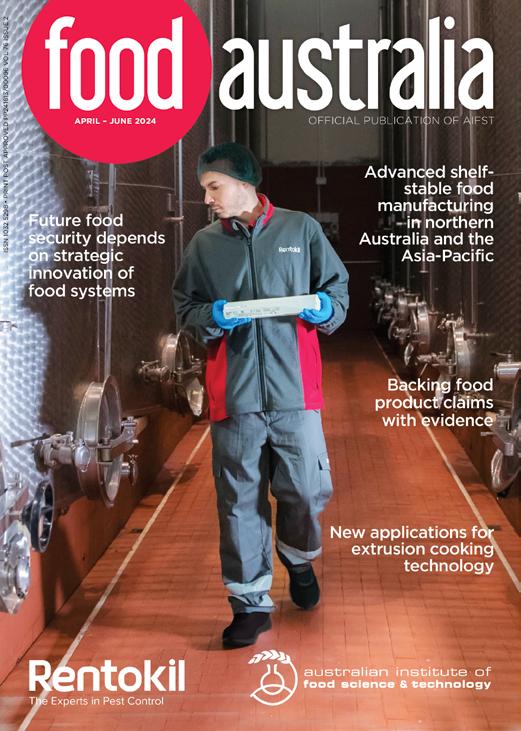
Rentokil - Transforming food safety: the power of connected pest control technology
April
– June 2024
REGULARS
the Numbers
People
Food Files 26 food australia 3 COVER
05 By
06
18
44 20 10
Published by The Australian Institute of Food Science and Technology Limited.
Editorial Coordination
Melinda Stewart | aifst@aifst.com.au
Contributors
Dr Mary Ann Augustin, Dr Louise Bennett, Dr Andrew Costanzo, Ciska de Rijk, Dr Dan Dias, Amanda Evans-Lara, Lian Flick, Dennis Forte, Dr Geoff Fraser, Dr Christoph Gerber, Dr Steve Greenland, Dr Warren Hunt, Dr Snehal Jadhav, Dr Pablo Juliano, Dr Stefanie Kethers, Dr Kai Knoerzer, Dr Gie Liem, Deon Mahoney, Dr Evangeline Mantzioris, Dr Andrew McKune, Dr Nenad Naumovski, Dr David Ompong, Christo Opperman, Dr C Senaka Ranadheera, Elena Rybakoff, Dr Henry Sabarez, Pippa Saunders, Melissa Smith, Dr Kathryn Speer, Dr Roger Stanley, Dr Anthony Villani, Dr Nina Welti, Sally Wilson, Anna Wittwer, Dr Hafiza Fasiha Zahid.
Advertising Manager
Clive Russell | aifst@aifst.com.au
Subscriptions
AIFST | aifst@aifst.com.au
Production Bite Communications
2024 Subscription Rates
Australia $145.00 (incl. GST); Overseas (airmail) $225.00.
Single copies (Australia) $36.50 (incl. GST); Overseas $56.50
food australia is the official journal of the Australian Institute of Food Science and Technology Limited (AIFST). Statements and opinions presented in the publication do not necessarily reflect the policies of AIFST nor does AIFST accept responsibility for the accuracy of such statement and opinion.
Editorial Contributions
Guidelines are available at https://www.aifst.asn.au/ food-australia-Journal
Original material published in food australia is the property of the publisher who holds the copyright and may only be published provided consent is obtained from the AIFST. Copyright © 2018 ISSN 1032-5298
AIFST Board
Chair: Dr Michael Depalo
Non-executive directors: Mr Marc Barnes, Ms Julie Cox, Dr Heather Haines, Dr Gregory Harper, Ms Bronwyn Powell.
AIFST National Office
PO Box 780
Cherrybrook NSW 2126
Tel: +61 447 066 324
Email: aifst@aifst.com.au
Web: www.aifst.asn.au
Food for Thought
The theme for AIFST24, Food Science - Navigating our Future speaks to the challenges and opportunities ahead for the agri-food sector to meet future food needs and looks to the integral role of food science and technology as we navigate the way forward.
With a projected global population of 10 billion by 2050, the challenge of providing safe, nutritious, and accessible food while conserving natural resources becomes even more pressing. Food scientists are essential in developing innovative solutions to meet these demands sustainably and safely to ensure a thriving global food system for future generations. Integral to this discussion is the security of our food supply into the future.
In December 2022, the AIFST provided a submission to the Inquiry into food security in Australia and subsequently testified at a public hearing in June 2023. The inquiry’s remit was to look at strengthening and safeguarding food security in Australia.
The Inquiry Report from the House of Representatives Standing Committee on Agriculture into food security - Australian Food Story: Feeding the Nation and Beyond - was released in December 2023. The primary recommendation is the development of a comprehensive National Food Plan providing for the food security, including nutritional security, of the nation and its people.
Further to the establishment of a National Food Plan, the Committee recommended the Australian Government appoint a Minister for Food, within the portfolio of the Prime Minister and Cabinet, with responsibility for the development and implementation of the National Food Plan, regular monitoring and updating of the plan, and accountability for achieving outcomes and targets under the plan.
With 2024 well underway AIFST continues to collaborate with industry partners to ensure that the collective industry voice is heard and to champion the critical need for a well-coordinated national food plan and an industry-led, food system strategic advisory body, chaired at the Ministerial level, to develop the plan.
The clear message from the AIFST and other related organisations, across the agri-food sector is that business as usual, as we plan for the future, is simply not an option.
How are you ensuring food science and food scientists and technologists support food science for food security and sustainability? What will you do differently, what will your role be and how will you create change?
Fiona Fleming B. App Sc (Food Tech); MNutr Mgt; FAIFST Chief Executive Officer fiona.fleming@aifst.com.au

Pathway to diversity in STEM: review
The Diversity in STEM Review, conducted by the Commonwealth Minister for Industry, Science and Resources in 2022, evaluated the delivery and impact of existing women in STEM programs. It also examined how existing programs could be reformed to support greater diversity of STEM-skilled Australians.
The Government established this review to help meet Australia’s future skills needs - estimated at 1.2 million tech-related jobs by 2030 - as our current STEM pipeline won’t meet this forecast demand.
In February 2024 the panel’s final report was released, which outlined various ways to increase diversity in science, technology, engineering and mathematics in Australia.
The report contains:
• Detailed recommendations for creating structural and cultural change in Australia’s STEM system
• A strategy for designing and delivering greater diversity in STEM programs.
The report details 11 recommendations across four themes:
• Government coordination and leadership
• Creating safe and inclusive workplaces
• Lifelong learning
• Changing perceptions and valuing diverse knowledge.
The report includes an approach to developing a strategic suite of programs that go beyond gender equity.
The review found that advice on ways to improve education and employment outcomes for underrepresented people in STEM must come from those with lived experience.
The recommendations aim to drive actions to increase diversity and inclusion of people underrepresented in STEM education and jobs and includes actions for industry, governments, the education sector, not-for-profits and individuals.
STEM statistics
Only 36% of STEM university students identified as female
Less than 1% of First Nations people held a university STEM qualification
Around 5% of people studying university STEM subjects were living with a disability
<16% of Australian engineering graduates are female
11% to 15% was the increase of the proportion of women in STEM qualified occupations between 2012 and 2022 47% of all STEM enrolments in Year 12
of Engineering enrolments
Females make up: Percentage of population with a VET STEM qualification:
and Torres Strait Islander
of Technology enrolments
of population with a university STEM qualification:
Islander
Source: Department of Industry, Science and Resources (2024) Pathway to diversity in STEM review: final recommendations report. Australian Federal Government https://www.industry.gov.au/publications/pathwaydiversity-stem-review-final-recommendations-report
food australia 5 BY THE NUMBERS
4.4% Aboriginal
0.5% Aboriginal
6.5% Non-Indigenous 4.9% Non-Indigenous
24%
and Torres Strait
23%
Percentage
Adjunct Professor Deon Mahoney FAIFST

In January, Deon Mahoney was appointed to the position of Adjunct Professor within the School of Agriculture and Food Sustainability, at the University of Queensland.
This honorary position is in recognition of his standing in the food safety arena and in anticipation of forging and establishing stronger connections between the University and leaders in academic, industry and professional fields.
Deon has enjoyed a long career supporting food science, specifically food safety, both in Australia and overseas. During this time he has worked with universities, R&D corporations, the World Health Organisation, the Food and Agriculture Organisation, FSANZ, and Dairy Food Safety Victoria. He currently works with the International Fresh Produce Association (IFPA) as the Head of






Food Safety and Sustainability.
In addition, he has served on various CODEX committees, been an active member of the Joint Expert Meeting on Microbial Risk Assessment (JEMRA) and has actively served on various boards. He is currently on the boards of FSANZ and the Fresh Produce Safety Centre Australia and New Zealand. Previously he served for a term as a non-executive director on the AIFST Board.
This new role provides an excellent opportunity to teach, inspire and mentor future food safety professionals. It blends real-world knowledge and experience with the opportunity to educate and enthuse students about the challenges and opportunities across the food industry.




6 food australia PEOPLE
Vale Tony Fairbrother

L–R Tony Fairbrother with Professor Ranil Coorey, Stuart Johnson and Associate Professor Vicky Solah at the event celebrating 25 years of food science and technology at Curtin University.
Tony Fairbrother passed away in January this year.
From 1993 to 1999 Tony was a lecturer in food science and technology at Curtin University and was an active member of the Western Australian branch of AIFST.
Tony was appointed to Curtin University by the then Head of the School of Public Health, Professor Colin Binns.
Tony completed the work commenced by Dr Nola Caffin, Curtin’s first lecturer in food science, setting up new courses such as the Bachelor of Science (Food Science and Technology) and the Graduate Diploma (Food Science and Technology) at Curtin.
Tony also worked on various projects, such as one with the Western Australian Department of Agriculture and Indonesian researchers on developing lupin tempe. This research resulted in several published papers and conference presentations.
Dr Vicky Solah joined Tony’s team at Curtin in 1998. Dr Solah remembers Tony as a special person with an ability to ‘cut through’, helping students struggling with English as well as complex subject matter. “He retained a sense of wonder, and an almost childlike enthusiasm for life, and everything around him,” Dr Solah said.
Stuart Johnson remembers spending years interacting with Tony on industry groups and the course steering group at Curtin. “Tony was involved with us at Peters Ice Cream and was always able to see innovative solutions,” Mr Johnson said.
“His engineering skills combined with food microstructure insights were invaluable. Tony was a man who didn’t like to waste time. He was matter-of-fact and liked to ’get on with it’. “But he always had a wry smile when something amused him and a real enthusiasm that infected those around him,” Mr Johnson said.
Hundreds of students' lives were changed for the better and many graduates carried Tony's passion and love of food science and technology into food industries and universities around the world.
Former student Dr Wendy Hunt recalls: “Tony inspired me in food science from the start. After an early poor exam result, he bought me a coffee and took the time to show me how to answer exams questions. He had great confidence in me and was himself, inspirational.” Dr Hunt said.
Sadly missed. Rest in Peace.





1.
SAMPLE PREP
• Containers • jars • tubes • measuring vessels • plates and dishes • blender bags • spoons • spatulas and scoops
• crushers • blenders • homogenisers
• stirrers, • shakers • hot plates • centrifuges
digesters • water baths
balances
extractors.
2. CHEMISTRY
• Wet chemistry • chromatography
• filtration and electrochemistry • buffers
acids
solvents
volumetric solutions standards • indicators
allergens
quantitative and qualitative analysis
general microbiology • pathogenic organism analysis.
3. MICROBIOLOGY
• Dehydrated media / pre-poured plates • enzymatic kits • colony counters • microscopes
• spectrophotometers • Adenosine Triphosphate (ATP) tests. For accuracy and professionalism














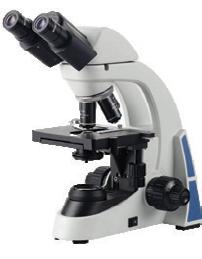











(02) 9603 1205 rowensw@rowe.com.au





food australia 7
Your one stop shop for Food and Feed laboratory supplies and equipment. Contact Rowe Scientific Pty Ltd today, for a complete solution for all your Food and Feed laboratory requirements. Scan the code to see a range of Food and Feed products on our webstore. REF:101 x/marketing/advertising/AIFST South Australia & NT Ph: (08) 8186 0523
Victoria
Australia
rowesa@rowe.com.au Queensland Ph: (07) 3376 9411 roweqld@rowe.com.au
& Tasmania Ph: (03) 9701 7077 rowevic@rowe.com.au New South Wales & ACT Ph:
Western
Ph: (08) 9302 1911 rowewa@rowe.com.au www.rowe.com.au
•
•
•
•
•
•
•
•
•
Tipping the scale - QUT’s pilot manufacturing plant for innovative foods
Words by Sally Wilson
Australian food and beverage manufacturers have long had an appetite for fast-track product development. Now, a $16 million upgrade of the Queensland University of Technology (QUT) Mackay Renewable Biocommodities Pilot Plant (MRBPP) is bridging a critical gap in Australia’s manufacturing capability. For the first time in Australia, companies will have the opportunity to embark on early-stage scale-up, where they can undertake product development at speed, reducing the cost and timeframes required for product formulation, regulatory evaluation and sensory trials. The upgraded Pilot Plant will be Australia’s leading large scale PC2, food-grade research translation facility.
This monumental upgrade is made possible through Australia’s Food and Beverage Accelerator (FaBA) and a series of significant co-investments from QUT, the Australian and Queensland Governments through the Regional Recovery Partnerships Program and the Queensland Government Department of State Development and Infrastructure Industry Partnership Program.
Hosted by The University of Queensland and supported by the Commonwealth Department of Education’s Trailblazer Universities Program, FaBA represents a $160 million investment to boost Australia’s food and beverage manufacturing sector. Supporting the commercial goals and growth drivers of start-ups, SMEs and large-scale corporations across Australia, FaBA signifies the collective intention of governments, research institutions and industry to revitalise sovereign food manufacturing capability and embrace a future where science, technology and innovation collide with our famed natural assets to deliver the broader range of premium food and beverage products that consumers
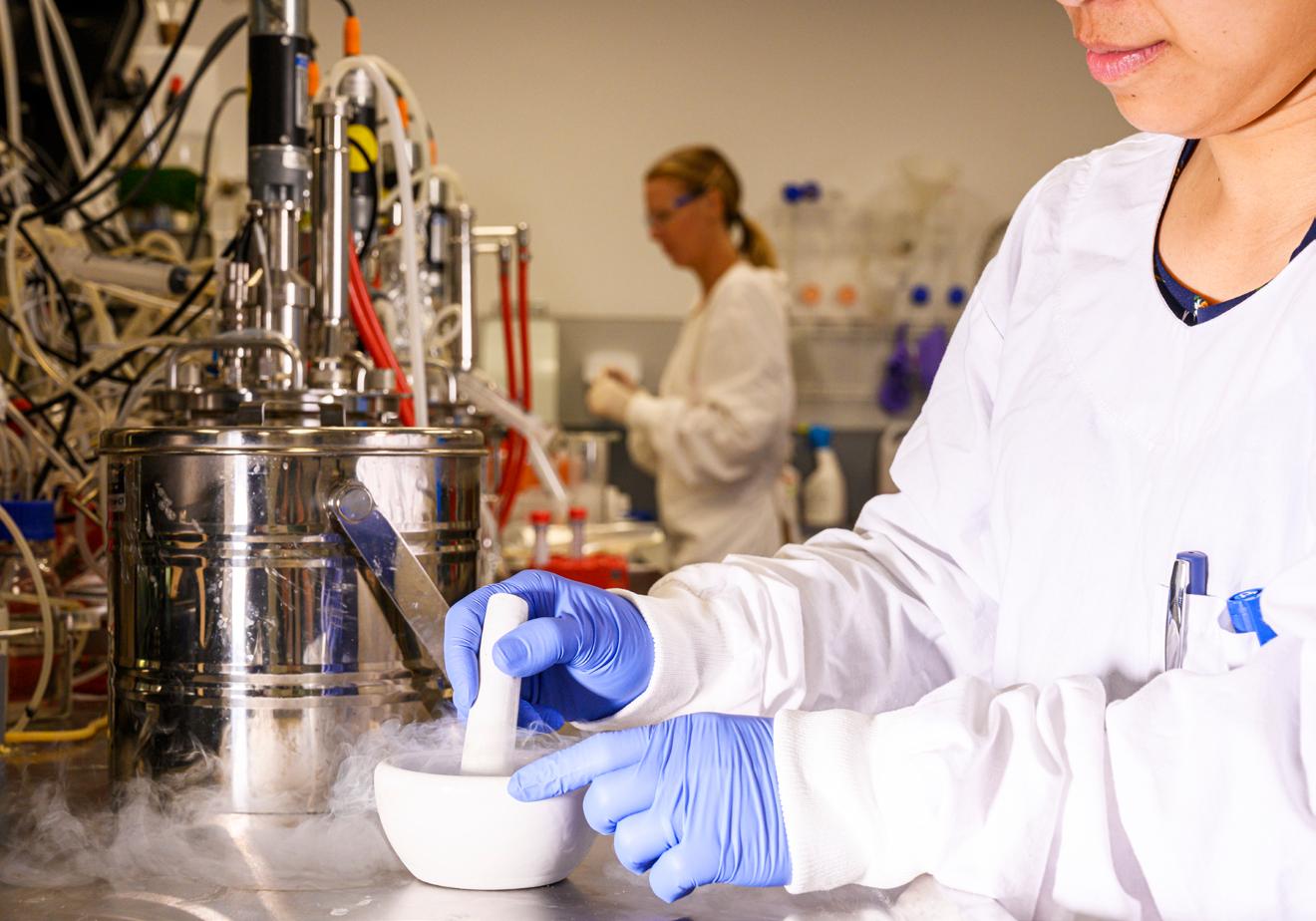
Fermentation and bioprocessing laboratory.
are increasingly demanding.
QUT’s Mackay Pilot Plant will play a crucial role in the story that will unfold. Established in 2010 as Australia’s first and only publicly accessible pilot scale biorefining facility, the decision to expand capability by investing in large scale precision fermentation is expected to result in a game-changing transformation for the food and beverage sector.
Professor Ian O’Hara from the QUT Faculty of Engineering has long championed the growth of Australia’s bioeconomy and Queensland’s potential to seed new high-tech manufacturing industries and facilities. He leads an industrial translation program with a view to harnessing the power of synthetic biology applications across a multitude of bio-based industries. When it comes to food and beverages, Professor O’Hara believes the key to unlocking a new generation of previously unattainable food products and novel ingredients is precision fermentation.
Precision fermentation could lead to developments in nutritionally-valuable proteins and oils which in turn, have the potential to create a smorgasbord of future food options.
“The advantages of precision fermentation are that it can lead to new food products and ingredients that are not possible to produce through traditional methods, providing sustainability benefits and increasing consumer choice,” Professor O’Hara said.
Dr Chris Downs, FaBA Director, said the Accelerator had invested in the MRBPP to enable industry to scale and ensure on-shore production of innovative ingredients. “The Pilot Plant has the potential to help cement Australia’s position as a leader in the development of ingredients from precision fermentation,” Dr Downs said.
In partnership with FaBA, the QUT Mackay Pilot Plant food grade research translation facility has been designed to offer industry access to a range of essential equipment, services and scale-up support, previously unavailable in Australia.
Superior scale-up infrastructure
QUT is host to some of Australia’s leading capability in research and scale-up of processes for synthetic biology and product development,
8 food australia INNOVATION
with globally recognised expertise across precision fermentation and bioprocess innovation. From strain design and testing, laboratory scale fermentation and process development through to pilot scale biomass processing, milling and downstream processing, QUT bioinnovation expertise is in high demand.
The upgraded Pilot Plant will offer industry access to precision fermentation equipment at various scales of up to 2,400L. This will enable product testing and commercial proof of concept studies to be conducted in conjunction with fully contained pilot scale process development, all of which can be carried out in parallel to regulatory and safety approvals. With batch fed or batch continuous fermentation and +/methanol induction available, the upgrade will offer industry access to state of the art biomass conversion and biorefining, expanded upstream and downstream processing for product recovery and drying and superior in-process analytics and technoeconomics.
Regulatory compliance and food safety
The Pilot Plant will also work to address the challenges of operating within a food grade and physical containment environment which both operate under different regulatory environments. To ensure that the challenges related to quality control and regulatory processes are addressed, QUT and FaBA will appoint a Quality Manager to work with industry to ensure a high level of regulatory compliance and customer service. This role will help to provide exemplars for the integration of food, quality and safety aspects in precision fermentation. It will test and inform regulatory processes and add value to industry making compliance a simpler exercise for future proponents.
Driving strategic economic growth with a skilled workforce
Integral to the success of the Mackay Pilot Plant upgrade is its strategic location in the heart of the Mackay-
Isaac-Whitsunday region, home to one of the world’s largest sugar feedstock resources, and a dynamic industrial economic development zone eager to grow and transform the Australian production of alternative foods, protein products and plant extractives.
QUT and FaBA are establishing new career pathways for students, researchers and industry professionals, whilst training a motivated and highly skilled existing regional workforce. Key education and mixed-mode training opportunities to support industry growth are being developed through the FaBA Training Centre and also at the QUT Faculty of Engineering where new Graduate Certificate and Masters courses in bioprocess engineering allows for specialist training in precision fermentation and downstream processing.
Healthy for people and the planet
Investing in precision fermentation capability for Australia offers a way to create new functional ingredients and premium food and beverage products with evidence based nutritional benefits.1 Professor Jolieke van der Pols leads the Food Innovation program in the Centre for Agriculture and the Bioeconomy at QUT. She recently joined FaBA as Co-Deputy Lead of the Innovative Ingredients program where she shares her more than 20 years of research surrounding the health, wellness and sustainability effects of food. Studying the impacts of novel food formulations and innovative ingredients, Professor van der Pols is excited by the opportunities precision fermentation technology offers to consumers.
“The Mackay Pilot Plant upgrade represents a significant opportunity for Australia’s food and beverage sector,” Professor van der Pols said.
“Not only can companies scale confidently to produce novel ingredients for human foods, they can now do this in a way that leverages abundant, local feedstocks and highquality Australian produce, offering important opportunities for improving

Professor Ian O’Hara, Deputy Dean, Engineering at QUT and Queensland Government Biofutures Industry Envoy.
sustainability outcomes across the supply chain,” she said. Industrial transformation and research translation go hand in hand. The key to achieving long term success is to work collectively with all stakeholders ensuring cost-effective product development and sustainable supply chains as we encourage companies to scale and commercialise their technologies here in Australia. By investing in pilot scale precision fermentation capability, QUT and FaBA are paving the way for improved recognition of Australia as a sophisticated and competitive investment destination for the premium food and beverage sector where a range of products, innovative ingredients, new technologies, companies and jobs will emerge. We invite you to join us as we shift gear and transition toward a fast-to-scale mindset for Australian food and beverage companies.
References
1. Mary Ann Augustin, Carol J. Hartley, Gregory Maloney & Simone Tyndall (14 Jan 2023): Innovation in precision fermentation for food ingredients, Critical Reviews in Food Science and Nutrition, DOI: https://doi.org/10.1080/104 08398.2023.2166014
Sally Wilson is the QUT Senior Manager, Industry Engagement for Agricultural Sciences and the Bioeconomy. f
food australia 9
New applications continue to grow for extrusion cooking technology
Words by Dennis Forte

Extrusion may be simply defined as the process of shaping a ‘plastic’ (or dough-like) material by forcing it through a restriction orifice or die. The definition may, in some instances, be extended to also include the continuous formation of the plastic or dough-like material from a free-flowing solid feed material and/or a number of solvents or reactants.
Extrusion processes (and extruders) were developed simultaneously in various industries during the last two centuries. The technology has its roots in the simple ram extrusion of ceramic beads during the 6th century BC. Continuous screw extruders were not developed until the mid-1800s and further refined during the 1900s. The cross-fertilisation of ideas between the various industries continues to characterise the development of this versatile and important processing technology.
The continuous processing of foods and feed products via extrusion technology continues to grow in popularity. Extruders can be used to cook, form, mix, texturise and shape a wide variety of food products under conditions that favour quality retention, high productivity and low cost. Due to the versatility and cost-effectiveness of the technology, it is being used in many diverse applications and in many new industries.
Traditional applications for extrusion technology
The list of traditional areas of application for this technology stretches across the whole of the food and feed industries. Products such as infant foods, ready-toeat breakfast cereals, direct expanded (and third generation) snacks, textured vegetable protein, breadcrumbs (and fillers or bulking agents), dry (and semi-moist) pet foods, aquatic feeds and stock feeds, are typical applications for extrusion cooking.
In the more recent past, manufacturers have chosen to utilise extrusion technology in products such as fruit snacks (and leathers), confectionery (both boiled and aerated) and chewing gum. Even the continuous manufacture of chocolate has been achieved.
Technology improvements and new technology developments
An area of ongoing debate between the various users of extrusion technology has been the benefits and the differences between single screw extruders (SSE) and twin screw extruders (TSE). Typically SSE technology was significantly cheaper to purchase and operate. The operating range (with regards to both the moisture content and the total fat content of the formulations) and the types of products that
could be manufactured with a TSE, however, were significantly broader. The key point of difference (other than the obvious geometrical one) relates to the transport mechanisms involved. SSE may be regarded as drag flow pumps, where friction between the product formulation and the barrel wall dominates the performance of the equipment. TSE, on the other hand, may be regarded as positive displacement pumps, where there are negligible frictional forces involved and leakage flows dominate the performance.
In general, the differential between the technologies continues to diminish. The manufacturers of many of the SSE continue to improve the screw and barrel geometry resulting in improved performance characteristics. These improvements lead to increased costs resulting in a smaller difference in price between the two technologies. Improvements in the metallurgy used by manufacturers of both technologies continues to develop thereby providing improved wear resistance and extended performance in the field. The inclusion of other materials such as fused ceramics and fibrereinforced composites is also gaining favour.
The inclusion of a preconditioner into the extruder system (wherein the use of direct steam injection allows the optimal addition of thermal energy) provides the opportunity
10 food australia
FOOD ENGINEERING
to further improve the processing capacity of a given extruder, whilst also favouring the improvement of many of the critical product attributes, such as water stability and the nutritional value of the food.
The recognition of the importance of the role of barrel heating and/ or cooling in the indirect control of the fluid dynamics within the extruder barrel is an area that has lead to significant improvement in the area of process control. The enhancement of the control of the barrel wall temperature (which directly influences the melt viscosity in the region adjacent to the wall) allows more accurate manipulation of the leakage flows in the extruder, thereby resulting in better control of the cooking process itself.
The link between feed performance (with respect to product durability, product density and product digestibility) and the energy inputs to the process is an area that has received extensive focus in recent years. As a result, a number of the equipment manufacturers have developed density and specific mechanical energy (or SME) control techniques. The techniques utilise either barrel venting and/or flow throttling technologies to indirectly control the degree of fill within the extruder barrel, thereby influencing the mechanical energy input to the process. The direct control of the ‘ambient’ pressure is another means of product density control being offered by equipment manufacturers.
New applications for an established technology
The flavour of product formulations is typically improved as a result of extrusion cooking. The treatment of the extruder as a continuous reactor and the study of the progression of the numerous forms of reaction chemistry involved has been an area of significant focus in recent years. As a result, the advent of processes for the controlled formation of various flavour precursors and flavour enhancers is now becoming an area of industrial interest.
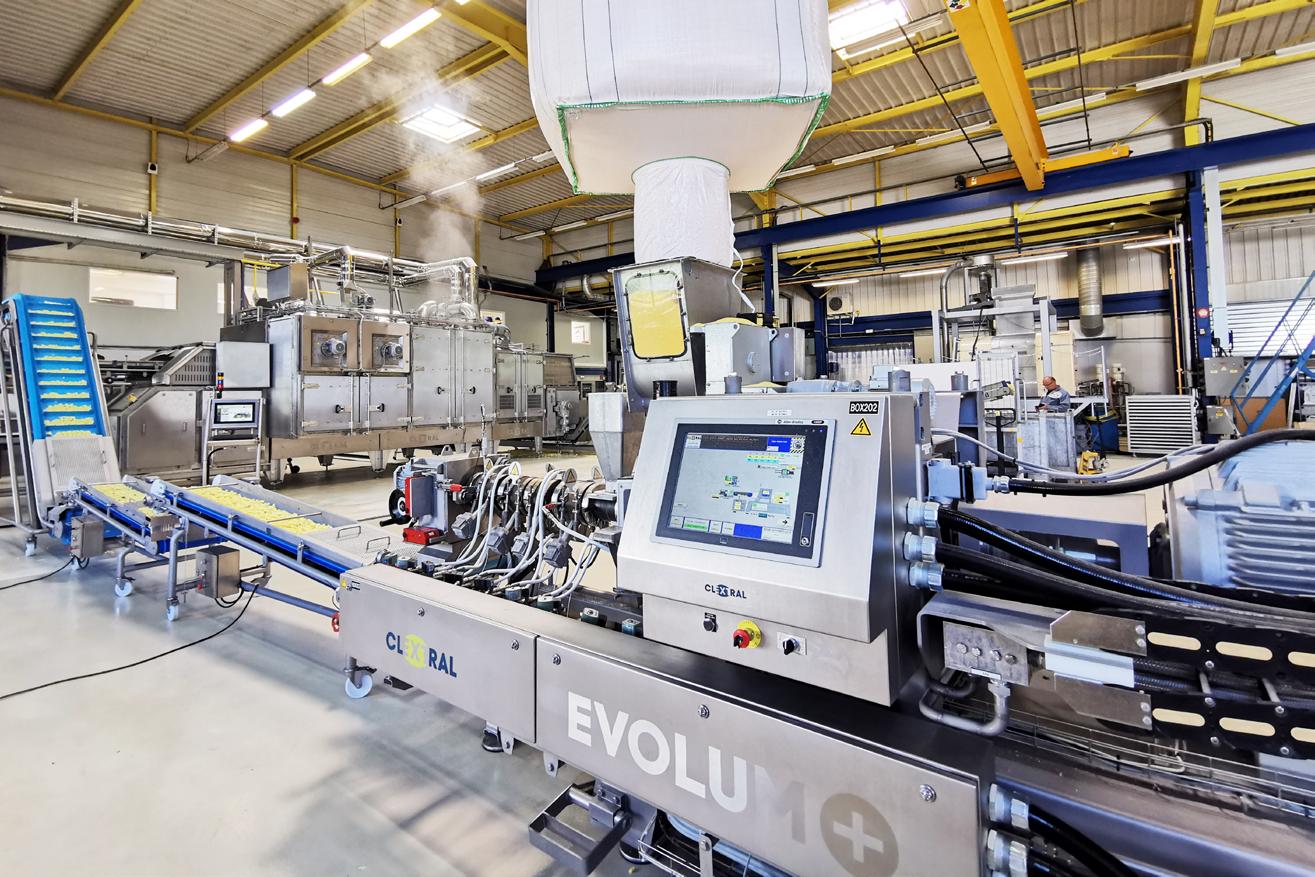
The nutritional benefit of the consumption of foods with high protein content has gained widespread recognition in recent times. As a result, the development of extruded snacks and RTE breakfast cereals with high protein content has been extensive.
The development of the high moisture extrusion cooking process (HMEC), for the processing of functional proteins has been a key focus area for one of the TSE manufacturers. This technology promotes the development of wellbound fibrous structures, suitable for preparing meat and fish analogues, at higher than normal processing moisture contents (ie. > 70% w/w moisture compared with 20 to 30% w/w for normal extrusion cooking technology).
Improvements in the design of the extrusion dies and the cutter assemblies have allowed further refinement of product shape resulting in a number of 3D snacks being marketed. Co-extrusion technology (and even triple extrusion where an air layer is introduced between the two extrudate phases) continues to provide a multitude of possibilities for achieving alternative product texture. The use of liquified gas injection directly into the melt to improve product expansion is another means of improving the product texture that has attracted some attention.
The future
Although extrusion technology is a relatively mature and wellestablished technology, it continues to find new areas of application both within the food industry and also in other non-related industries. As the level of understanding of the technology continues to improve and the extruder manufacturers continue to optimise their equipment, the potential for new and novel applications will continue to grow. Whether the product manufacturers are seeking to finetune existing processes, to adjust formulations (in order to optimise costs or nutritional performance), to adapt to changing market demands or to create new products, extrusion technology will continue to offer significant production advantages to the food and feed manufacturing industries into the future.
Dennis Forte is an Independent Engineering Consultant to the food industry, providing technical support, design expertise and technical training to a broad range of manufacturers throughout Australia, South-East Asia, North America and Europe. His key areas of expertise include extrusion processing, process modelling, process optimisation and drying technology. f
food australia 11
Snack production EV and dryer.
How sourdough can teach us to make IBS-friendly bread
Words by Anna Wittwer
There is burgeoning awareness of the varied nutritional needs of modern consumers, in particular those defined by sensitivity or intolerance towards specific components of foods. Many such components have become household names and dishes that omit gluten, dairy, nuts, eggs or shellfish are now common in cookbooks and restaurants.
FODMAPs (fermentable oligosaccharides, disaccharides, monosaccharides and polyols) have not yet achieved that status. They are found in many staple foods, including wheat bread, and when ingested in quantities above a certain threshold1 cause symptoms such as bloating, flatulence, luminal distention and diarrhoea in people with functional gastro-intestinal disorders such as irritable bowel syndrome (IBS).
Fructans are the major FODMAP found in bread and make up approximately 0.7-2.9% of wheat dry matter, mostly from the bran layer of the grain.2 The final concentration of fructan in bread depends not only on the processing, species and cultivar of the grain from which the flour was made, but also the way in which the bread is made.
Sourdough bread-making tends to involve an extended proofing time, in some cases greater than eight hours. When the time in which fermentation microorganisms can effect biochemical modifications of the dough is increased, the invertases produced by fermenting yeasts which cleave terminal fructose residues from fructan molecules do so to a greater extent.3 After eight hours of proofing, even standard baker’s yeast (Saccharomyces cerevisiae) can halve the initial dough fructan concentration (see Figure 1A).
Sourdough bread-making also involves the use of a sourdough starter for leavening. This is a mixture of flour and water that ferments ‘spontaneously’ (ie. with no defined starter cultures added) and is kept alive by regular refreshments with new flour and water. Over time, it

becomes home to a community of one to two yeast species and one to several bacterial species.4 Yeasts from this ecosystem have valuable traits that can be exploited for low-fructan bread-making.
In addition to invertase, certain strains of Kluyveromyces marxianus produce inulinase, an enzyme that can cleave internal fructan linkages to effect a rapid breakdown of dough fructans.3
Other yeasts have traits that indirectly affect dough fructan levels. Kazachstania humilis, the secondmost commonly identified fermenting yeast in sourdoughs,5 is ideally suited to long dough proofing times due to its ‘slow and steady’ leavening ability (see Figure 1B).
K. humilis also frequently cooccurs with Fructilactobacillus sanfranciscensis, 6 a lactic acid bacterium whose dough acidification abilities modulate the activity of endogenous dough enzymes like alpha-amylase and glucoamylase.7 These enzymes release glucose and maltose from starch and other larger carbohydrates, which in turn support the growth of fermentation
microorganisms (see Figure 1C).
Excitingly, these attributes of a traditional method of bread-making represent an array of tools that can be applied to create bread suited to the needs of people today.
References
1. Varney, J. et al. (2017) FODMAPs: food composition, defining cutoff values and international application: Defining and adapting the low-FODMAP diet. J. Gastroenterol. Hepatol. 32, 53–61
2. Huynh, B.-L. et al. (2008) Genotypic variation in wheat grain fructan content revealed by a simplified HPLC method. J. Cereal Sci. 48, 2, 369–378
3. Struyf, N. et al. (2018) Kluyveromyces marxianus yeast enables the production of low FODMAP whole wheat breads. Food Microbiol. 76, 135–145
4. Van Kerrebroeck, S. et al. (2017) Sourdoughs as a function of their species diversity and process conditions, a meta-analysis. Trends Food Sci. Technol. 68, 152–159
5. Heil, C.S. et al. (2022) Yeasts and Breadmaking. In Yeasts: From Nature to Bioprocesses (Luiz Alves, S. et al., eds), pp. 327–356, Bentham Science Publishers
6. Wittwer, A.E. et al. (2022) Kazachstania humilis. Trends Microbiol. 30, 10, 1012-1013
7. Gänzle, M.G. (2014) Enzymatic and bacterial conversions during sourdough fermentation. Food Microbiol. 37, 2–10
Anna Wittwer is a PhD candidate in the School of Agriculture, Food and Ecosystem Sciences at The University of Melbourne and was the winner of the 2024 AIFST John Christian Young Food Microbiologist Award. f
12 food australia AIFST JOHN CHRISTIAN YOUNG FOOD MICROBIOLOGIST AWARD
Figure 1 (A-C).










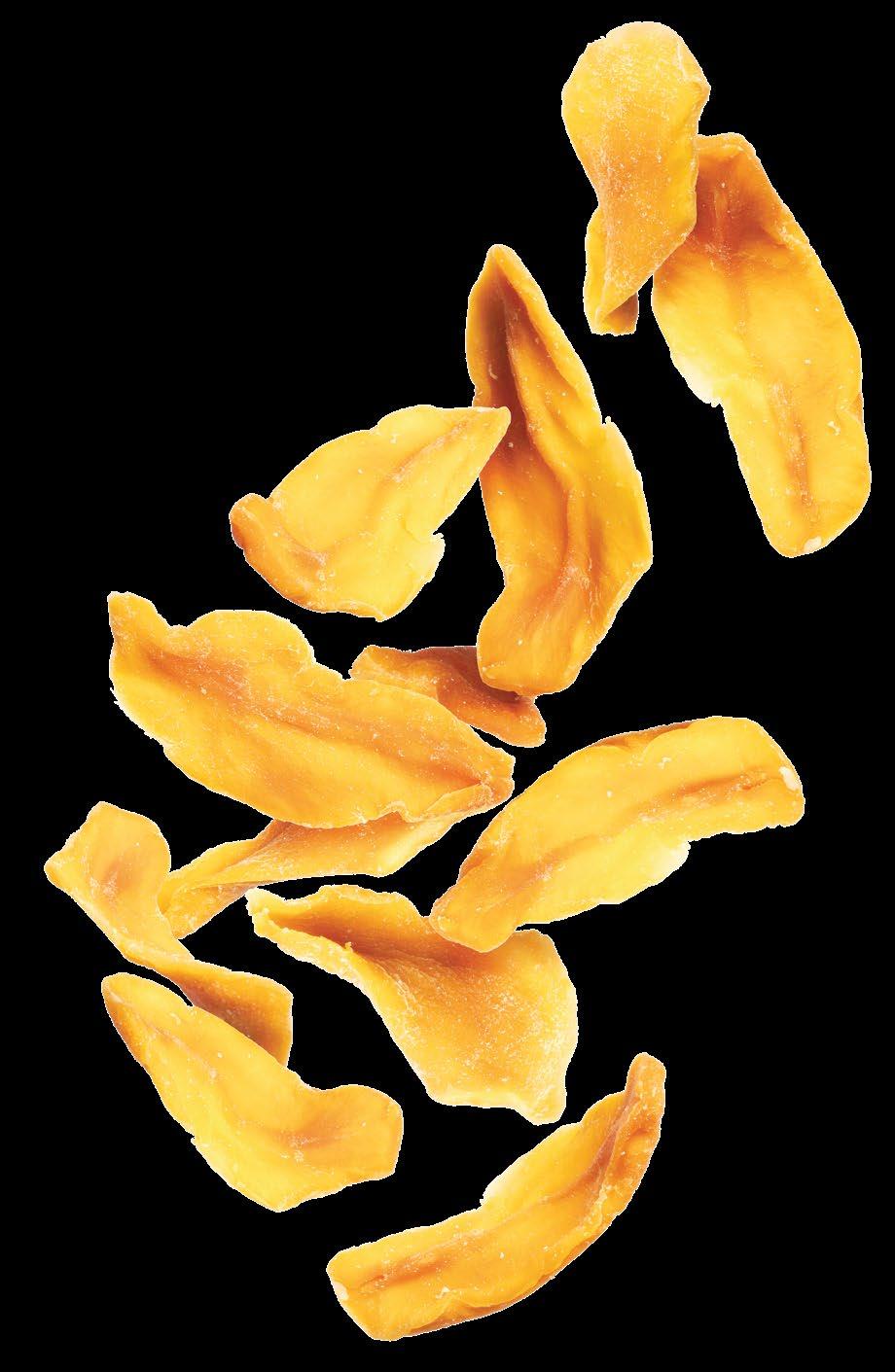




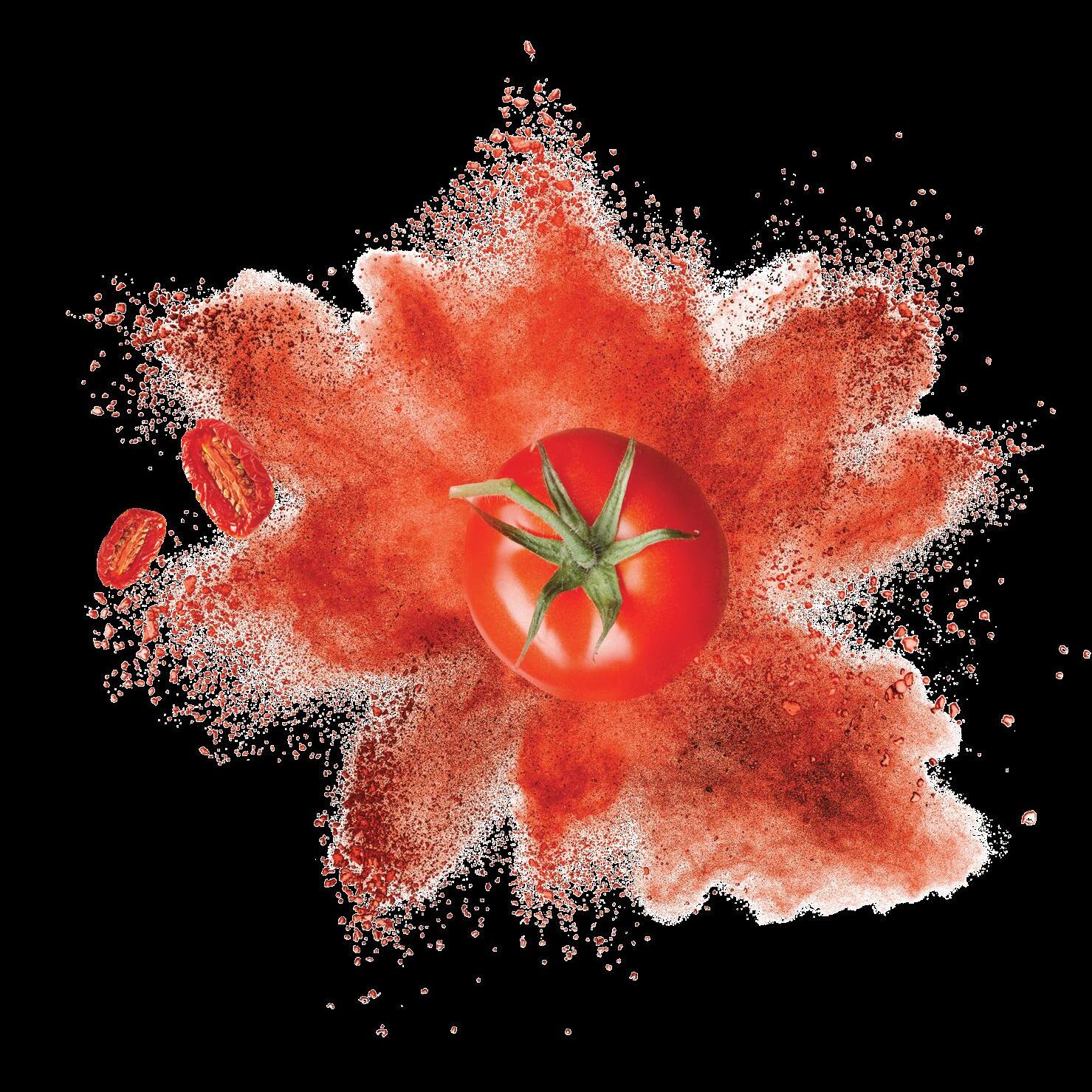








Backing food product claims with evidence
Words by Dr Nina Welti, Dr Geoff Fraser, Dr Christoph Gerber, Dr Stefanie Kethers and Lian Flick
The Australian food and beverage sector has experienced significant pressures from the global pandemic, inflationary pressures, geo-political conflicts, as well as changes in weather patterns. In addition, there have also been shifts in the way food and beverages are consumed and produced through new technologies. Taken together, these shifts present considerable opportunities for the Australian food and beverage sector to be optimistic about the future.
Australia’s agriculture and food system is highly trusted and reputable, domestically and internationally. According to the Anholt-Ipsos Nation Brands Index, brand Australia is ranked ninth out of 60 nations.1 The brand index compares nations across six categories, including how much country-of-origin increases the likelihood of a product being purchased.
Australia’s enviable reputation in the food sector is underpinned by a world-class assurance system. Food safety and quality is highly regulated in Australia to ensure it meets export requirements and standards. This in turn results in high return value
of Australian agricultural exports, a significant contributor to our national economy. The forecasted gross export value for 2023-24 is $84 billion, including fisheries and forestry production.2
Changing regulatory requirements over time can be a challenge for businesses to develop coherent strategies and meet multiple market access demands. Looking to the future, consumers increasingly care about where our food comes from and how it was produced. Rising consumer and importer interest in food provenance is growing the need for supply chain transparency and traceability.3 Consumers want evidence that backs product claims, particularly on sustainability or safety credentials, if we are to pay a premium for products with these attributes.4
Regulatory compliance in food supply chains is clearly important, but the downside is the high cost of compliance. As in many other industries, it is onerous on businesses and regulators. Administration involves many systems, reporting and players across the supply chain. The National Agricultural Traceability Strategy5 highlights that improving
compliance efficiencies in agricultural trade could save $110 million to $170 million per year.
According to CSIRO’s national protein roadmap, expanding and integrating systems across the supply chain to deliver end-to-end traceability and trusted credentialing could add $1.2 billion in export revenue for the red meat sector by 2030.6 This would see new digital and integrity systems across the supply chain be used to trace food from farm to fork. This data would verify key attributes such as food safety, welfare and sustainability. The data used to provide this evidence must be trustworthy and balance the data interests of all actors, while maintaining a collective outlook.7
Providing this assurance requires objective, quantifiable evidence backed by data that links food products to their sources. One data type that can provide this link comes from comparing isotopic analyses from food products and from inputs to that food, such as the soil and water in the region of origin. These isotopic analyses can act as tamper-resistant ‘fingerprints’ of food provenance that are maintained faithfully through complex supply chains.
14 food australia
FEATURE FOOD SCIENCE URE
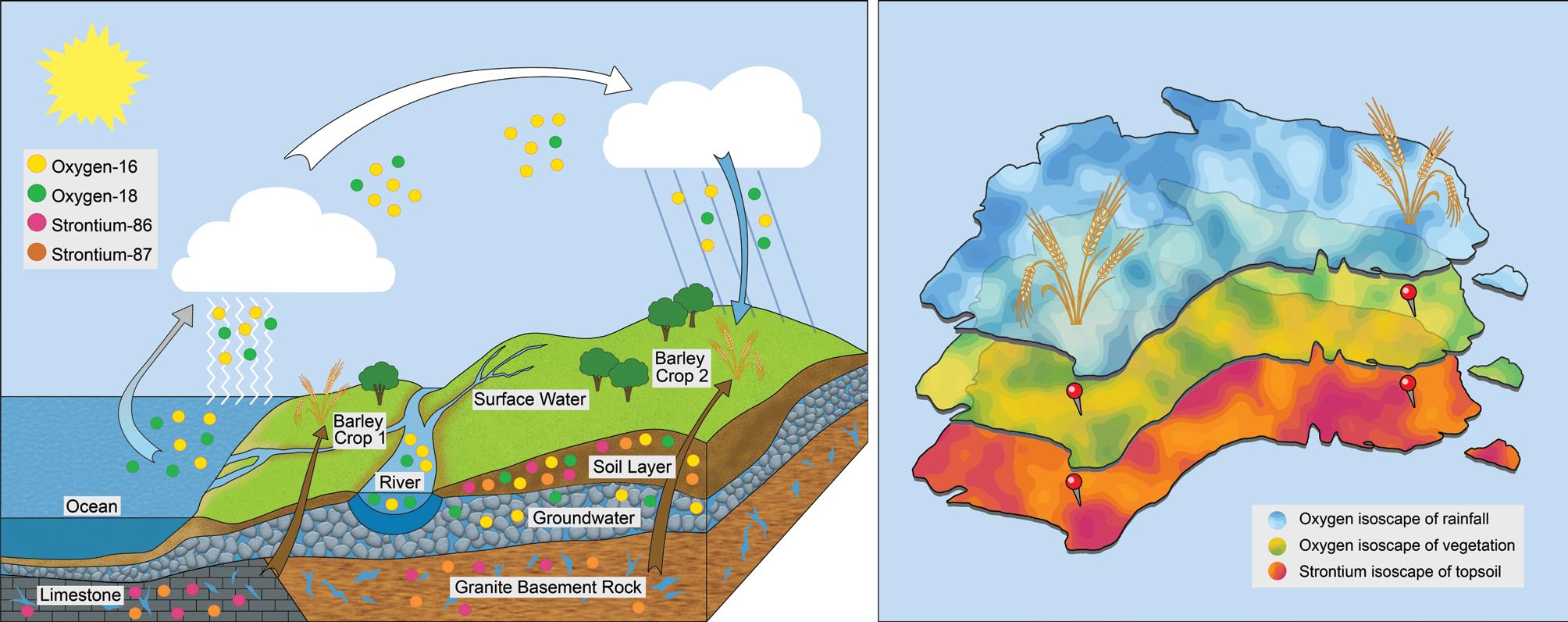
found in food relate to the soil and water conditions the food product grew in.
The
signatures can be modelled across a larger area; these are called isoscapes.
The use of stable isotope ratios has been demonstrated as an effective method for authenticating geographic origin or production method for particular case studies,8 but the approach is not used routinely and is currently not commercially viable as a general tool. The sample collection and analysis is relatively expensive and time consuming and measurement methodologies have not been standardised. In addition, to make isotopic ‘fingerprinting’ more effective and viable in the food industry requires a well-established ‘library’ of isotopic information from soils and waters across Australia, against which isotopic data from food products can be matched (see breakout text).
Although establishing such isotopic data libraries may appear a daunting task, much of the relevant data has already been collected. Australian government science agencies regularly include stable isotope measurements in their environmental monitoring and research activities. There is a wealth of existing data and models that describe the distribution and patterns of stable isotope ratios throughout the Australian environment. The challenge is that the data are often siloed within organisations, stored in different formats in different organisations, and with differing
Isotopes are atoms of the same chemical element that differ in how heavy they are. Since they are the same element, they behave the same way in chemical reactions, so for example when plants photosynthesise sugar, it doesn’t matter whether the oxygen atom from the water molecule is a light oxygen-16 or a heavy oxygen-18, both will form the same chemical compound, and the ratio of heavy and light isotopes therefore remains approximately unchanged during chemical reactions. In contrast, the variation in mass means that different isotopes of the same chemical element behave slightly differently during physical processes, such as evaporation or condensation. This leads to useful differences in isotopic ratios within, for example, sea water, clouds, rain and river water.
Stable isotope ratios are naturally occurring chemical signatures or ‘fingerprints’ used to characterise and understand the environment. For example, soils across Australia (and elsewhere) have been shown to contain distinct isotopic signatures in different regions for a range of chemical elements, related to the composition of the underlying rocks from which these soils are derived. As the plants take up these elements, they assimilate the isotopic ratios of the soils in which they are growing. Similarly, the water in rainfall, rivers
and different groundwater aquifers typically exhibits distinct isotopic signatures. This characteristic isotopic signature of soils and waters is then transferred into plants as they grow and into animals through the plants they eat.
We can use the stable isotope ratios of oxygen and hydrogen in plants to understand movement of water through the soil-plantatmosphere continuum or groundwater flows and storage, and the stable isotope ratios of carbon in soils to understand the nutrient cycles relating to soil health as well as climatic patterns. Isotopes found in food relate to the soil, water, production techniques and climatic conditions that it grew in.
In this way, measurements of isotopes in foods can be used to verify the origin of that food, via relationships with the soil, water, production techniques and climatic conditions during food production. Isotopic patterns are determined by quantifiable mechanisms of climate, geology and food webs and so provide an evidencebased solution for verifying the geographical origin, sustainability, production and distribution of food products around the world. They can be used to authenticate Australian agricultural and food product claims and environmental credentials by verifying where our food comes from and how it was grown.
Figure 1. (a) Isotopes
(b)
isotopic

levels of accessibility. These factors limit the utility of the existing data for food provenance applications, and make it difficult to address growing expectations from industry, researchers, consumers and governments for more availability of information and data from across supply chains.
To address this challenge, and to enable the effective and efficient use of these public-good data collections, a current project led by Australia’s national science agency CSIRO, in partnership with Geoscience Australia, the Australian Nuclear Science and Technology Organisation (ANSTO) and the National Measurement Institute (NMI), with co-investment from the Australian Research Data Commons (ARDC), is breaking down data silos and creating a national isotope data resource. The goal is to develop a FAIR (Findable, Accessible, Interoperable, Reusable)9 data ecosystem, balancing the data needs and interests across industry, researchers, consumers and governments across supply chains.
This project to connect and federate stable isotopic data resources is one of nine projects that the ARDC is investing in through the Food Security Data Challenges program. The projects are developing
innovative digital infrastructure solutions with the aim of improving research into Australia’s production, consumption and distribution of safe and high-quality food. The nine projects received a total of $3.6 million in investment from the ARDC’s Food Security Data Challenges Program, with a total of more than $5.7 million co-investment from project partners. Learn more about Food Security Data Challenges10 in food australia Vol.75(4) and by visiting https://ardc.edu.au/program/ food-security-data-challenges/.
Connecting these rich databases in a way that is trusted, shareable and useful is a big challenge, beyond the realms of a single organisation. By coordinating this effort between these national government science organisations, we bring together expertise on isotopes, supply chains and data harmonisation. This ensures long-term utility of valuable data and balances the potential commercial and scientific outcomes that underpin trust in the data. This single national collection creates a data foundation that can be used, is maintained, and is public, and the data will serve as objective, quantifiable evidence that can be trusted by regulators and the public.
Using public-good data enables
equitable access across industry to sophisticated verification technology. Future research and commercial development can make use of this national data collection. Investments can be made into solutions which support the continued data collection efforts of Australian government science organisations. Repurposing these data collections creates a return on investment for the research organisations and incentive for continued research. The national data collection also provides a foundation for developing and testing new approaches to isotopic fingerprinting of foods.
Ultimately, government, research and industry will be able to use these public data collections to create accessible and trusted verification tools that can tell consumers where our food comes from and how it was grown. The data could be used to visualise food production regions and trace the origin of a product through the spatial modelling of environmental stable isotope ratios (see breakout text). These verification tools can help Australia maintain key export markets, as well as enter new high-value markets. This requires good data governance, which is a major challenge for the digital transformation of food value chains. The project partners are taking on the challenge of ensuring responsible use of data as well as responsible data curation (this is trusted data from trusted science organisations) in the operating model for the data resource.
The existing intergovernmental agreement on data sharing between commonwealth, state and territory governments11 commits all jurisdictions to share public sector data where it can be done securely, safely, lawfully and ethically, allowing for innovative operating models to realise its full value. This project demonstrates how government agencies can make foundational, public-good data available to realise the full value of these national assets, and to support key industries.
16 food australia
FEATURE FOOD SCIENCE URE
Dr Nina Welti is building a picture of where Australian food is grown and how.
Australia is leading the way in an unprecedented effort to bring together data for the benefit of future innovation across our agricultural system to underpin the reputation of the Australian food industry with trusted, objective evidence.
Realising the potential of digital technologies to transform the food system will require collaboration. The future is not just collecting data, but creating shared benefits for publicgood research and commercial outcomes. Use cases from industry, peak bodies, universities and other research organisations will help to inform how the data resource will be developed and operated in a way that is relevant, accessible and serves the needs of different sectors. Register your interest to participate and develop the future at: https:// ardc.edu.au/project/connectingfederating-stable-isotopic-dataresources/.
References
1. The Anholt-Ipsos Nation Brands Index 2023, https://www.ipsos.com/sites/default/files/ct/ news/documents/2023-10/NBI_2023_Press_ Release_Supplemental_Deck_WEB.pdf
2. ABARES 2023, Agricultural Commodities Report: December quarter 2023, ABARES, Canberra. https://doi.org/10.25814/v4kr-ry73
3. McRobert, K., Gregg, D., Fox, T. & Heath, R. Development of the Australian Agricultural Sustainability Framework 2021-22. Australian Farm Institute, 2022.
4. Kovacs, I. & Keresztes, E. R. Perceived Consumer Effectiveness and Willingness to Pay for Credence Product Attributes of Sustainable Foods. Sustainability 14 (2022). https://doi. org/10.3390/su14074338
5. National Agricultural Traceability Strategy 2023 to 2033, https://www.agriculture.gov.au/ biosecurity-trade/market-access-trade/nationaltraceability
6. Jarrett, Lisa; Charnock, Sebastian; Liu, Mingji; Dalton, Sam; Towns, Audrey; Wynn, Katherine. Protein - A Roadmap for unlocking technology-led growth opportunities for Australia. Melbourne: CSIRO; 2022. https://doi. org/10.25919/n510-rh64
7. Calzati, S. & van Loenen, B. A fourth way to the digital transformation: The data republic as a fair data ecosystem. Data & Policy 5 (2023). https:// doi.org/10.1017/dap.2023.18
8. Carter, J. F. & Chesson, L. A. Food Forensics: Stable Isotopes as a Guide to Authenticity and Origin. 1 edn, Vol. 1 (London: CRC Press, 2017).
9. Wilkinson, M., Dumontier, M., Aalbersberg, I. et al. The FAIR Guiding Principles for scientific data management and stewardship. Scientific Data 3, 160018 (2016). https://doi.org/10.1038/sdata.2016.18



10. ARDC, Food Security Data Challenges Projects.. https://ardc.edu.au/multiproject/food-securitydata-challenges-projects/ 11. Intergovernmental Agreement on data sharing between Commonwealth and State and Territory governments. Data Availability and Transparency Act 2022
Dr Nina Welti is a senior research scientist at CSIRO, where she leads this project and the sustainable and trusted agrifood value chain strategic research portfolio.
Dr Geoff Fraser is a geologist at Geoscience Australia, where he is the leader of the Geochronology and Stratigraphy team in the Minerals, Energy and Groundwater Division.
Dr Christoph Gerber is a senior experimental scientist in the water security program at CSIRO where he generates and interprets a wide range of environmental isotope data.
Dr Stefanie Kethers is the Program Manager for Food Security Data Challenges at the ARDC.
Lian Flick is a Technical Program Manager at CSIRO and the project lead and corresponding author. f

countless clients to navigate the regulatory compliance maze.
food australia 17
Our specialist team operates at the cutting edge of food
innovation.
Call Charles Fisher for an obligation free discussion. CHARLES FISHER +61 3 9663 9877 www.khq.com.au
BEVERAGE
& therapeutic good
Our deep regulatory expertise has supported
FOOD &
FOOD FILES
Dr Dan Dias, Dr Andrew Costanzo, Dr Snehal Jadhav and Dr Gie Liem

How carbs, fats, and taste affect how much we like and want food – not calories or processing
Processed foods that are hyperpalatable or energy dense are often assumed to contribute to weight gain due to excessive consumption - they taste so good that we cannot stop eating them. However, this is not well established in science. Not all processed foods have the same composition and there are many other factors beyond ‘liking’ that affect how much we eat. A recent study explored factors influencing how much we like food and how it contributes to food reward. They focused on three main factors: energy density, level of processing (according to the NOVA classification system), and the carbohydrate-tofat (CF) ratio. A range of processed foods were rated by 224 adults on how much they liked them (liking), how much they wanted to eat them (reward) and their imagined taste intensity.
Contrary to expectations, there was no relationship between liking and reward with the energy density
of foods or how processed they were. However, foods that had a balanced CF ratio and a stronger taste intensity tended to be liked more and had a greater perceived reward. Also, foods with greater fibre content tended to be liked less. CF ratio, taste intensity and fibre content were the greatest determinants of liking and food reward, independent of energy density and processing.
The researchers theorise that liking and reward are primarily determined by how much energy a food contains versus how filling that food is, which they call energy-to-satiety ratio (ESR). For example, processed foods that are high in fat and sugar (eg. cakes and potato chips) have a high ESR, while foods with a high fibre content (eg. snack bars and breakfast cereals) have a low ESR. Both are highly processed but have a different effect on eating behaviour.
The ESR of a food may therefore be a better metric used in the future to understand the intake of processed foods.
Rogers PJ et al. Evidence that carbohydrateto-fat ratio and taste, but not energy density or NOVA level of processing, are determinants of food liking and food reward. Appetite. 2024; 193:107124.
Unlocking the mystery: how peracetic acid in orange juice creates a clove symphony Orange juice is a popular and widely consumed beverage. While freshly squeezed juice is revered as the pinnacle, the significance of industrially processed juice is on the rise.
Whether derived from concentrate or not from concentrate, most industrially processed orange juice undergoes thermal pasteurisation to prolong shelf life at room temperature. A primary driver of orange juice's appeal lies in its delightful aroma. Extensive research has delved into the compounds contributing to its characteristic aroma, as well as those responsible for certain common off-flavours linked to processing and storage. The primary aroma compounds found in freshly hand-squeezed orange juice encompass ethyl (2S)-2-methylbutanoate (fruity), ethyl butanoate (fruity), (3Z)hex-3-enal (green, grassy), ethyl 2-methylpropanoate (fruity), acetaldehyde (fresh), and (R)limonene (citrus-like) among others. However, thermal processing can
18 food australia FEATURE SENSORY & CONSUMER SCIENCE
trigger the generation of undesirable compounds such as dimethyl sulfide with a cabbage-like odour, originating from (S)-methylmethionine. Additionally, during storage, the acid-catalysed process leads to the formation of α-terpineol, imparting a turpentine-like smell.
Limonene and linalool are both present in substantial amounts in orange juice, contributing to this transformation. Nonetheless, the most significant off-flavour compound in orange juice is 2-methoxy-4-vinylphenol, commonly known as 4-vinylguaiacol (4-VG). This compound produces a clove-like aroma and significantly influences the distinctive aged-type off-flavour observed in stored orange juices.
An investigation by Bauersachs et al. utilised gas chromatography–olfactometry and aroma extract dilution analysis on an orange juice exhibiting a distinct clove-like offflavour, leading to the identification of 5-vinylguaiacol (5-VG). This compound shared the same odour profile as 4-VG but had not previously been detected in orange juice. In five out of six commercial orange juices displaying clove-like off-flavours, 5-VG exhibited even greater odour potency than 4-VG. Additionally, through spiking and model studies, residues of peracetic acid were identified, a cleaning agent used during orange juice processing. This compound can undergo Baeyer-Villiger oxidation with the natural orange juice compound, hesperidin during subsequent heating (eg. pasteurisation), resulting in the generation of significant amounts of 5-VG. 5-vinylguaiacol can play a pivotal role in the production of offflavours, contributing substantially to the clove-like character compared to the well-established orange juice off-flavour compound 4-VG. It was recommended by the authors that the use of peracetic acid in orange juice processing facilities should be discontinued.
Bauersachs E, Walser V, Reglitz K, Dawid C and Steinhaus M (2024) Peracetic acid residues in orange juice can lead to a 5-vinylguaiacol-induced clove-like off-flavor via Baeyer-Villiger oxidation of hesperidin. Food Chemistry. 440: Article 138252.

That ad(d)s to my appetite
Do you feel hungrier or crave certain foods after seeing food ads? You’re not alone. A new study by Boyland and colleagues of the University of Liverpool has found that food ads can make us hungrier and crave more food, especially the foods that are shown in the ads. The study used a smartphone app to measure how adults felt after seeing food ads on TV, online, or outdoors.
The study involved 54 participants (mostly women, average age 21) who provided ratings of their hunger and cravings for different types of food (such as fast food, soft drinks, snacks, etc.) up to six times per day when they saw a food ad and at random times. The study lasted for one week and collected 1,223 assessments.
The results showed that people felt hungrier and craved more food after seeing food ads than at random times. This effect was stronger for TV ads than for online or outdoor ads. People mostly craved the types of food that were advertised, such as pizza or chocolate.
The study used a method called Ecological Momentary Assessment (EMA), which allows researchers to
capture real-time data on people’s feelings and behaviours in their natural environments. EMA can be effective for assessing how food marketing influences our appetite and food choices.
The study provides evidence that food marketing is associated with hunger and craving in adults, which may have implications for public health and obesity prevention. The study suggests that policymakers should consider regulating food advertising to protect consumers from its harmful effects.
Boyland E, Spanakis P, O'Reilly C,Christiansen P. Associations between everyday exposure to food marketing and hunger and food craving in adults: An ecological momentary assessment study, Appetite, Volume 196, 2024. https://doi. org/10.1016/j.appet.2024.107241.
Dr Dan Dias is Senior Lecturer, Dr Andrew Costanzo is Lecturer, Dr Snehal Jadhav is Senior Lecturer and Dr Gie Liem is Associate Professor.
All are at CASS Food Research Centre, School of Exercise and Nutritional Sciences, Deakin University. f
food australia 19
Future food security depends on strategic innovation of food systems
 Words by Dr Louise Bennett and Dr Mary Ann Augustin
Words by Dr Louise Bennett and Dr Mary Ann Augustin
Evolving understanding of food security
The accepted working definition of food security was derived by consensus of experts at the World Food Summit in 1996, to be ‘a state in which all people, at all times, have physical, economic and social access, to sufficient, safe, and nutritious food to meet their dietary needs and food preferences for an active and healthy life’.1 Since 1996, the definition of food security has evolved from representing supply of adequate caloric energy to the supply of total nutrition, including adequacy of macro- and micro-nutrients.2 Delivering on this changed definition of ‘food security’, which aims to meet individuals reasonable preferences in all circumstances, poses multiple and significant challenges to current food systems. For example, the satisfaction of ‘preference’ in defining food security for all is of particular concern considering the excessive environmental footprint and the inadequacy of required land for agriculture, if the entire world
adopted a ‘Western’ diet.3
To address future food security for Europe, the ‘Food 2030’ project was developed.4 This systematic, collaborative, cross-disciplinary, systems approach framed a roadmap of the transformations required. When placed in context with the UN Sustainable Development Goals (SDGs) and food systems, food security cannot exist independently of environmental sustainability of all inputs, outputs and practices. This has led to the recent proposition of the enhanced definition: ‘Sustainable Nutritional Security’, which embodies seven metrics: food nutrient adequacy; ecosystem stability; food affordability and availability; sociocultural wellbeing; food safety; resilience and waste and loss reduction.5 By extension, innovations in elements of food systems must address the global challenges of climate change, food and nutrition security, planetary health and social inequity, and manage the risk of food system disruptions.
Convergence of threats to food security and food systems
The security of the food supply is of growing concern because of the multiple pressures associated with population and global warming, which among other factors, visibly undermine the resilience of the supply chain.6 Global food production is the largest cause of environmental change. Food production and agriculture contribute up to 30% of all greenhouse gas (GHG) emissions, occupy 40% of available land, and use 70% of available fresh water.7,8 The extent to which these food systems impact environmental change is putting their capacity to nourish future generations is under threat.9 To achieve targets set within the United Nations’ Agenda 2030, there is urgent need to transition to more sustainable food systems, from production through to consumer behaviours.10,11
A gap exists between the projected food requirements and what can be produced using
20 food australia FEATURE FOOD SECURITY
current methodologies without exceeding the planetary boundaries that underpin sustainable food production.8 In particular, the overall diets of developed countries are environmentally unsustainable,8 while also being associated with poor health outcomes.12
Industrialisation of food production, as practised by developed countries, is acknowledged to involve a disproportionate utilisation of arable land,3 and is accompanied by significant food loss and waste13 and polluting effects of agrochemicals.14
Imprecise cultivation methods that impose irreversible forms of pollution potentially threaten soil viability and water quality, while trends towards centralised agribusiness lead to loss of nutritional and biodiversity. Global warming increasingly undermines the stable climatic conditions needed for primary production6 while population pressures are leading to competition for, and scarcity of, agriculturally viable arable land.15
Recently, the COVID-19 pandemic has led to interruptions in agricultural production and supply chains, which have directly affected food security, highlighting the particular vulnerability of communities that depend on long-distance trade and transport for their food supply.15 These direct factors interact with complex socio-economic, political, and other factors, to different extents and create inequity and uncertainty in food supply, threatening social cohesion in their extreme effects. In short, the infinite expansion of primary production agricultural methods practised in the past cannot be used to feed the human population anticipated in the future, with consequent increase in food insecurity predicted.
State of food security
Evaluation of comparative food security of different countries has recently been attempted using complex systems-based statistical analysis of global datasets.16 The research was based on analysis of FAO global food production
Proposed Solution
Shift to healthy diets
Recommended Actions
• Regulate marketing of unhealthy foods to children
• Provide front-of-pack nutritional guidance
• Encourage healthy options (tax high sugar and unhealthy food)
• Provide healthier formulated foods
Repurpose government support for agriculture
New tax to support food system transformation
Innovate to increase productivity and workers’ opportunities
Scale-up safety nets to keep food affordable for the poorest
• Reset incentives to improve access to healthy affordable diets
• Reform agricultural subsidies
• Carbon and nitrogen pollution tax
• Design new taxes that are tailored for local environment
• Accelerate innovation for poorer producers
• Prioritise areas of public research
• Develop and strengthen safety nets
• Prioritise support for children’s nutritional needs
data, including 219 products and 169 countries. In the mapping of Agricultural Product Space Networks, based on the similarities of conditions needed for primary production, four distinct clusters were identified including: (i) tropical fruits and crops; (ii) wheat, barley, process-associated animal foods; (iii) vegetables, nuts, fruits; and (iv) a cluster of ‘outlier’ foods (eg. quinoa, Brazil nuts, safflower, small animal meats, mate (plant ingredient used in a South American beverage)). In the mapping of Agricultural Country Space Networks, there were two distinct clusters identified that contained either more or less developed countries. Relative to less developed countries (representing 96/169 in 2013), the more developed countries had higher metrics of income, production of total calories, production of total protein calories and share of both food imports and exports. It was observed that increasing food security, in terms of food supply per capita accompanied by higher diversification of produce, was achieved at the expense of sustainability.16 In models that explained food security by indices of food production specialisation patterns, compared with less developed countries, it was apparent that for more developed countries the factors of entropy index (ie.
decrease in the concentration of production of specific foods) and coherence index (diversified production of food products with similar production capability needs) were statistically significant. This was not so for less developed countries. Furthermore, food security was associated with higher coefficients (~2-fold) of human capital in less developed countries. The research provided key insights into the systemic origins of food insecurity in less developed countries.16
Food security in Australia
Australia is one of the most food secure countries in the world, exporting more than 70% of agricultural produce.17 However, in the context of retail affordability, the 2023 Foodbank Hunger Report estimated that 3.7 million households in Australia experienced moderate to severe food insecurity, with the cost of living being the most common reason for food insecurity.18 In Australia, indigenous populations are more at risk of being food insecure. Estimates for food insecurity in the most recent (2015) health survey by the Australian Bureau of Statistics found that among the general population, food insecurity was between 4% and 13%, and in the Indigenous population, 22% to 32%.19 The food insecurity experienced
food australia 21
Table 1: Proposed solutions for food system transformation (adapted from European Commission, 2024).20
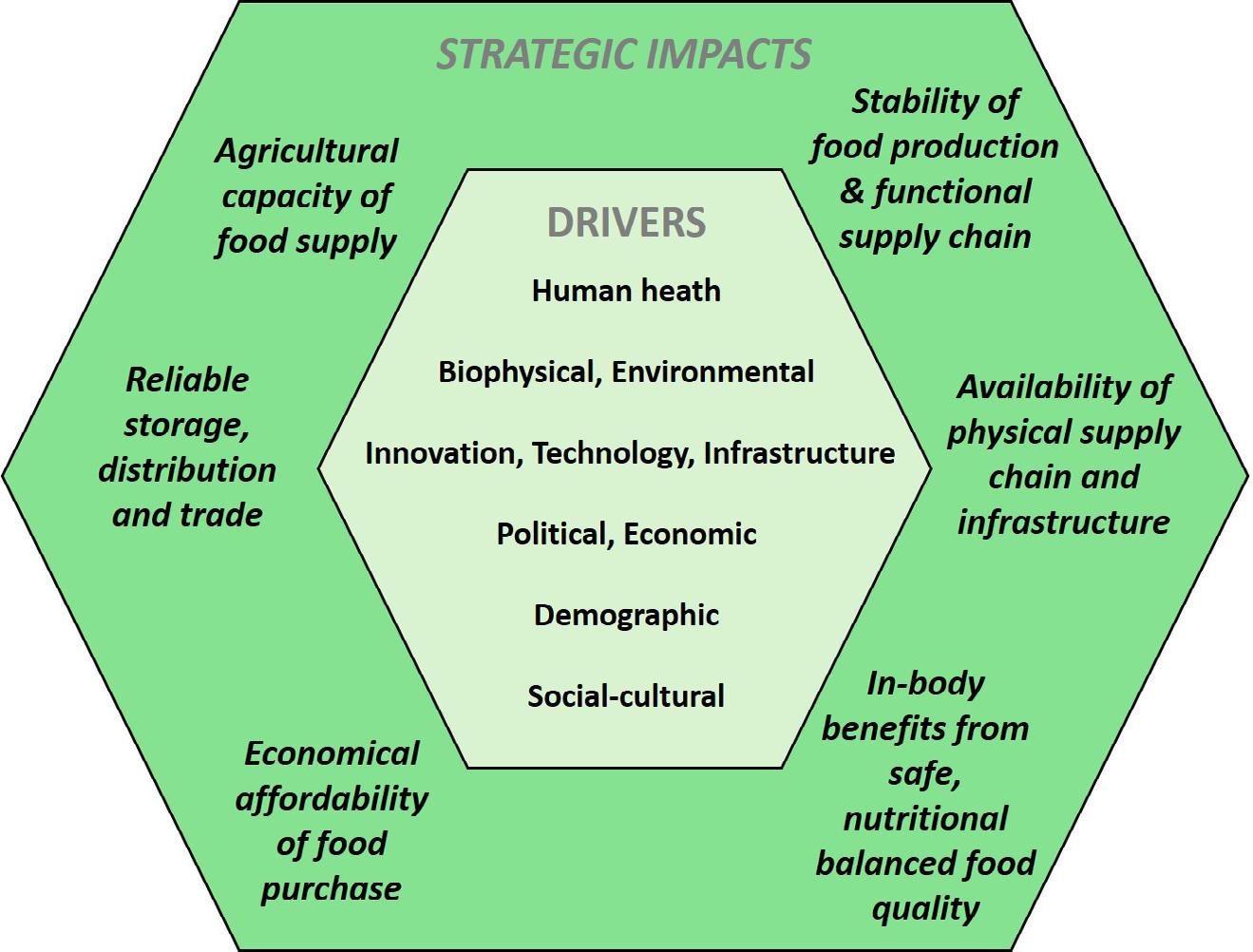
was characterised as chronic (ie. households with low income) or transitory (ie. due to short-term shocks such as natural disasters and the COVID-19 pandemic).19
Australian food producers cite the additional effects of climate change and biosecurity risks as threats to food security, with supply limitations driving price increases at retail outlets.21 In Australia, the Standing Committee on Agriculture recommended building and maintaining an integrated national food plan in consultation with State and Territory Governments.22 The plan, developed in consultation with relevant industries, sectors and the community, will aim to provide for food security of the nation and its people.
Innovation for improved food security and sustainable food systems
Innovation for sustainable food systems refers to the process by which “individuals, communities or organisations generate changes in the design, production or recycling of goods and services, as well as changes in the surrounding institutional environment, that are new to their context and foster transitions towards sustainable
agri-food systems for food security and nutrition” and includes “changes in practices, norms, markets and institutional arrangements, which may foster new networks of food production, processing, distribution and consumption that may challenge the status quo”.23 The complex array of factors, drivers and interdependencies that characterise the products and services of the food supply chains of developed countries have been mapped, including sensitivities to disruption (Figure 1).12 Ongoing innovation across the food supply chain towards improving food security needs monitoring across the multiple stakeholder domains, to maximise improvements and manage unintended disadvantage. Technological innovation should support the recommended goal for countries to achieve food selfsufficiency in the face of elevated risks of supply interruptions due to pandemics, geo-political issues, the volatility of food markets and armed conflicts.24,25
Pricing signals that value nutritional loadings and environmentally sustainable practices are needed if innovation is to drive food security. For example, a values-based approach to inform consumers and communicate sustainability values,26
in addition to a supportive regulatory environment, are needed.
Business of food system transformation
In 2024, the World Bank is responding to the food security crisis by supporting partners to build more resilient food systems, promote nutrition-sensitive agriculture and improve food safety. This includes significant new financial commitments (US$ 9.6 billion) to agriculture and related sectors. The European Commission has also proposed a number of solutions for food system transformation (Table 1) that reflect economic modelling of benefits (economic, environmental, social) and negative impacts (health, climate change, environment) of specific elements of food system transformations. More in-depth modelling of the opportunity costs of inaction and impacts of specific initiatives is required, with estimated unaccounted costs of USD$15 trillion per annum and US$510 trillion per annum of potential economic benefits.27 As the current food value chain is interconnected and complex, economic modelling requires the evaluation of impacts on multiple stakeholders and to ensure that implementation initiatives drive equitable outcomes and minimise trade-offs affecting disadvantaged stakeholders.28 Policies and innovations should drive environmentally sustainable production and consumption, while delivering the new criteria of food security for all.
References
1. FAO. (1996). Rome Declaration on World Food Security and World Food Summit Plan of Action. https://www.fao.org/3/w3613e/ w3613e00.htm
2. Adamczak-Retecka, M. and Sniadach, O. (2021). ‘Towards a Redefinition of the Food Security Concept in the Light of Climate Change: the European Union Law Perspective’, International Community Law Review 23 (23):283-293. doi: 10.1163/18719732-12341478.
3. Ritchie, H. (2017). How much of the world’s land would we need in order to feed the global population with the average diet of a given country? Published online at OurWorldInData. org. Retrieved from: https://ourworldindata. org/agricultural-land-by-global-diets
4. Baungaard, C., Kok, K. P. W., den Boer, A. C. L. et al. (2021). ‘FIT4FOOD2030: Futureproofing Europe's Food Systems with Tools for Transformation and a Sustainable Food
22 food australia FEATURE FOOD SECURITY
Figure 1: Drivers and practical elements of the food system that regulate food security (Adapted from Savary et al).15

Systems Network’, Nutrition Bulletin 46 (2):172-184. doi: 10.1111/nbu.12502.
5. Gustafson, D., A. Gutman, W. Leet, A. Drewnowski, J. Fanzo, and J. Ingram. (2016). ‘Seven Food System Metrics of Sustainable Nutrition Security’, Sustainability 8 (3). doi: 10.3390/su8030196.
6. Cribb, J.(2010). The Coming Famine: The Global Food Crisis and What We Can Do to Avoid It
7. Springmann, M., K. Wiebe, D. Mason-D'Croz, T. B. Sulser, M. Rayner, and P. Scarborough. (2018). ‘Health and nutritional aspects of sustainable diet strategies and their association with environmental impacts: a global modelling analysis with country-level detail’, Lancet Planet Health 2 (10):e451-e461. doi: 10.1016/s2542-5196(18)30206-7.
8. Willett, W., Rockström, J., Loken,B., et al. (2019). ‘Food in the Anthropocene: the EAT–Lancet Commission on healthy diets from sustainable food systems’, The Lancet 393 (10170):447-492. https://doi.org/10.1016/ S0140-6736(18)31788-4.
9. Fanzo, J., and C. Davis. (2019). ‘Can Diets Be Healthy, Sustainable, and Equitable?’, Current Obesity Reports 8 (4):495-503. doi: 10.1007/ s13679-019-00362-0.
10. Knorr, D., and M. A. Augustin. (2021). ‘From value chains to food webs: The quest for lasting food systems’, Trends in Food Science & Technology 110:812-821. https://doi. org/10.1016/j.tifs.2021.02.037.
11. Augustin, Mary Ann. (2023). ‘The science of food security and sustainability’, food australia 75 (4):14-17.
12. Friel, S., and L. Ford. (2015). ‘Systems, food security and human health’, Food Security 7 (2):437-451. doi: 10.1007/s12571-015-0433-1.
13. Conrad, Z., and N. T. Blackstone. (2021). ‘Identifying the links between consumer food waste, nutrition, and environmental
sustainability: a narrative review,’ Nutrition Reviews 79 (3):301-314. doi: 10.1093/nutrit/ nuaa035.
14. Devi, P. I., M. Manjula, and R. V. Bhavani. (2022). ‘Agrochemicals, Environment, and Human Health’, Annual Review of Environment and Resources 47:399-421. doi: 10.1146/ annurev-environ-120920-111015.
15. Savary, S., Akter, S. Almekinders, C., et al (2020). ‘Mapping disruption and resilience mechanisms in food systems,’ Food Security 12 (4):695-717. doi: 10.1007/s12571-020-01093-0.
16. Campi, M., M. Dueñas, and G. Fagiolo. (2021). ‘Specialization in food production affects global food security and food systems sustainability’, World Development 141. doi: 10.1016/j.worlddev.2021.105411.
17. Brown, A., C. De Costa, and F. Guo. (2020). Our food future: trends and opportunities edited by Australian Bureau of Agricultural and Resource Economics and Sciences. Canberra.
18. Foodbank (2023), Foodbank Hunger Report https://reports.foodbank.org.au/foodbankhunger-report-2023/' Accessed 8 April 2023)
19. Bowden, M. (2020). Understanding food insecurity in Australia. https://aifs.gov.au/ resources/policy-and-practice-papers/ understanding-food-insecurity-australia
20. European Commission (2024) Supporting policy with scientific evidence. https:// knowledge4policy.ec.europa.eu/publication/ economics-food-system-transformation_en (Accessed 9 April 2024)
21. Cole, H. (2023). Food security facing growing threats, farmers tell Australian parliamentary inquiry. https://www.abc.net.au/news/ rural/2023-03-29/food-security-facingthreats-from-climate-change-farmerssay/102158222
22. Swanson, M. 2023. A national food security strategy.
23. The High Level Panel of Experts (HLPE) on Food Security and Nutrition (2019). Agroecological and other innovative approaches for sustainable agriculture and food systems that enhance food security and nutrition. Rome: FAO.
24. Clapp, J. (2017). ‘Food self-sufficiency: Making sense of it, and when it makes sense’, Food Policy 66:88-96. doi: 10.1016/j. foodpol.2016.12.001.
25. Brankov, T., B. Matkovski, M. Jeremic, and I. Duric. (2021). ‘Food Self-Sufficiency of the SEE Countries; Is the Region Prepared for a Future Crisis?’, Sustainability 13 (16). doi: 10.3390/ su13168747.
26. Alroe, H. F., M. Sautier, K. Legun, J. Whitehead, E. Noe, H. Moller, and J. Manhire. (2017). ‘Performance versus Values in Sustainability Transformation of Food Systems’, Sustainability 9 (3). doi: 10.3390/su9030332.
27. Ruggeri Laderchi, C., Lotze-Campen, H., DeClerck, F., et al. (2024). Global Policy Report: The Economics of the Food System Transformation.
28. Fan, S. G. (2021). ‘Economics in food systems transformation’, Nature Food 2 (4):218-219. doi: 10.1038/s43016-021-00266-0.
Dr Louise Bennett is a Professor of Food Chemistry, Co-director of Monash Food Innovation, Monash University.
Dr Mary Ann Augustin is an Affiliate of Monash University and Adjunct Professor of the University of Adelaide. f
food australia 23
Australian Food Safety Auditor Development Project: cross-industry collaboration
In 2022, AIFST recognised the serious and increasing challenge of availability and competency of food safety auditors across all food categories in Australia.
In order to address this need, AIFST established a project designed to develop an auditor pipeline in Australia.
The key challenges identified were:
1. Food safety auditor availability
The number of food safety auditors in Australia is declining, primarily as a result of an ageing cohort and auditor fatigue caused by the increasing complexity and expectations of industry standards. Retiring auditors are not being replaced by younger professionals who are discouraged by the timeconsuming qualifications and demanding requirements. This results in an increased workload for remaining auditors and difficulty in scheduling audits at the required frequency for compliance to the standards.
2. Food safety auditor skill set Technical knowledge requirements for food safety auditors are continually changing. This is due to the number of private certification programs (CPs) and retailer addendums, and the regular updates to the CPs and the international standards on which they are based, such as the Codex General Principles of Food Hygiene, domestic food regulations. These in turn create additional areas of focus within the CPs, such as allergen management, food defence, food fraud, information security and food safety culture.
The increased use of information and communication technology in auditing has accelerated over the past two years with remote assessments implemented due to restrictions applied during the COVID pandemic. Auditors are now required to not only be IT literate, but adept at the use of innovative artificial intelligence and new data technologies. Auditing in the future

will include both traditional audit site visits as well as continuous surveillance using on-line data analysis.
The opportunity –cross-industry collaboration
In response, the AIFST is facilitating a program to create a pathway for the development of food safety auditing as a career of choice for food industry professionals in Australia. The focus is on the need for new third-party food safety auditors to audit food safety standards for accredited certification bodies. The foundation of the program is based on the qualifications and requirements of the Global Food Safety Initiative.
A key component is an intern program which has been developed with industry stakeholders to provide practical industry experience to food science and technology professionals seeking a career in food safety auditing, and those seeking experience in related industry sectors.
The food safety auditor intern pilots started in March 2024. The two interns, Anna Lovett and Erika Gomez Alfaro, will spend the next two years training and gaining practical experience with guidance and support from AIFST, the managing certification bodies, industry partners and the NSW Food Authority.
Each intern is employed and supervised by a certification body

for two years, and also spends sixmonths each with three different industry partners. The certification bodies are BSI and Intertek SAI Global. The industry partners hosting the interns are the Sydney sites of ARYZTA, Martin Brower, Baiada Poultry and Chef Fresh (Coles manufacturing site).
Anna Lovett is a food science graduate from Western Sydney University and holds an earlier Cert IV in food science and technology. She is a certified pastry chef with ten years’ experience in pastry, prepared desserts and confectionery manufacturing facilities. Anna is interning with Intertek SAI Global.
Erika Gomez Alfaro has a biotechnology engineering degree and has completed several short courses including HACCP, VITAL, Internal Auditing and CMFSR. She has six years’ experience in the feed and food industries, including two years in a high-risk food processing facility. Erika is working with BSI Group.
AIFST welcomes Anna and Erika and wishes them well in their progress to food safety auditor qualification.
This collaboration spanning industries presents an exciting pathway for the advancement of food safety auditing as a preferred career for professionals in the Australian food industry. It holds the potential to establish a continuous and systematic method for nurturing an auditor pipeline in Australia. f
24 food australia
Erika Gomez Alfaro.
FOOD SAFETY
Anna Lovett.








the Surface Do More. Phone: (07) 3736 2134 Email: FoodSafetyAU@neogen.com neogenaustralasia.com.au The Neogen® Clean-Trace Hygiene Monitoring System has been developed and enhanced with improved accuracy, speed and usability. More efficient production. Greater peace of mind.
Tea and anxiety: can this ancient drink reduce our stress levels?
 Words by Dr Kathryn Speer, Dr Andrew McKune and Dr Nenad Naumovski
Words by Dr Kathryn Speer, Dr Andrew McKune and Dr Nenad Naumovski
In Australia, anxiety is the most commonly diagnosed mental illness, affecting one in four Australians.1 Living with anxiety interferes with quality of life and increases the risk of developing comorbid chronic health conditions such as cardiovascular disease, depression, gastrointestinal diseases, substance abuse disorders and insomnia.2
The 2019 Global Burden of Disease Study revealed that the incidence of anxiety disorders has increased by 50% since 1990.3 Importantly, this study was conducted before the COVID-19 pandemic, which had many consequences including increased feelings of fear, uncertainty, unexpected grief, job loss, social isolation and changes to ‘normal’ life.
Nutraceuticals for disease prevention and management
Pharmaceuticals can be beneficial for managing illnesses, but they may also have unwanted side effects. It is common for these side effects to decrease quality of life and lead to additional health concerns. For this
reason, there is growing interest in using nutraceuticals derived from food products to prevent, improve or assist in managing health concerns. Furthermore, nutraceuticals may be safer and more accessible than pharmaceuticals.4
History of tea consumption
Disease treatment and prevention with food products and herbal extracts is not a new concept. Traditional Chinese medicine has been incorporating nutraceuticals into the healing process for centuries. However, use of nutraceuticals in health and disease has received greater global attention as targeted research and application surges in this area.
Tea, containing numerous phytochemicals, is one of the most frequently consumed beverages, second only to water, and may be a rich source for development of nutraceuticals.5 Worldwide, more than two billion cups of tea are brewed each day.
Tea is generally prepared from
harvesting fresh tea leaves, then drying and steeping them in boiled water. Scientific evidence supports health-promoting properties of tea due to high levels of polyphenols, flavonoids, enzymes and dihydrochalcones. From an antianxiety perspective, the simple act of drinking tea has a calming effect. The most effective anxiety-reducing teas appear to be green, black, oolong and chamomile (although chamomile is not considered tea due to use of flowers rather than leaves in its preparation). Whilst tea is a popular beverage, and its production and export are major businesses, little scientific research has examined tea as a therapy for anxiety.
Common teas and their anxiolytic effects
Research has classified tea originating from the plant Camellia sinensis into seven types based on processing: ‘green’ (unfermented), ‘yellow,’ ‘white,’ ‘oolong’ (partially fermented), ‘black’ (completely fermented), ‘aged pu-erh’ (drastically
26 food australia HEALTH & NUTRITION
fermented/aged) and ‘ripened puerh’ tea.
The processing of black tea involves oxidative polymerisation of monomeric flavanols by the enzyme polyphenol oxidase. Contrastingly, green tea production involves inhibition of the polyphenol oxidase enzyme via exposure to heat, producing a more ‘stable’ product.6
Green teas are a rich source of polyphenols including flavanols, flavonoids and phenolic acids. The beneficial health effects are ascribed to polyphenolic components, such as catechins, which are one of the most researched groups of tea compounds, with almost all extracted during the tea brewing process.
The most abundant catechin, Epigallocatechin gallate (EGCG), accounts for up to 60% of the total catechin content. Research indicates EGCG crosses the blood brain barrier, binds to the gamma-aminobutyric acid (GABA) receptor, imparting a calming effect, significantly relieving
stress and increasing brain activity, focus and attention.7
Another main constituent in green tea which may reduce anxiety is the amino acid, L-theanine, which has a similar effect to EGCG when ingested with caffeine. L-theanine also crosses the blood brain barrier and enhances GABA levels, thereby inhibiting sympathetic activity (associated with the fight-or-flight stress response), lowering cortisol levels and enhancing brain plasticity, serotonin and dopamine.8-10
Given the fermentation and oxidation processes of black, oolong and pu-erh teas, the catechin content is lower than green tea. However, these teas still contain anxiolytic compounds such as theaflavins, thearubigins and L-theanine (although the L-theanine content is lower than that of green tea).
Research found that black tea consumption for six weeks lowered cortisol levels and increased feelings of calmness following
a psychophysiological stressor, and consumption of oolong tea significantly reduced stress in participants indicated by improved heart rate variability.10,11
Herbal teas also appear to alleviate anxiety and stress. Chamomile tea is well-known for its calming effect and has been historically used to treat many health issues from anti-inflammatory and antibacterial ailments to anxiety/mood disorders and insomnia. The anxiolytic effect of chamomile tea has been attributed to its flavonoid profile which may increase production of dopamine and serotonin and decrease levels of noradrenaline, leading to a calmer state.8,12
Summary
Tea is clearly more than a popular beverage. It has deep cultural/ historical roots and is associated with improved health outcomes. Unsurprisingly, interest in beneficial health outcomes associated with





food australia 27

tea is gaining traction. Currently, consumers are more healthconscious, showing increased interest in natural products for preventing or treating debilitating health disorders, such as anxiety.
Evidence supports teas for alleviating anxiety. However, research has mostly been conducted in animals and epidemiological cohort studies, emphasising a need for human clinical trials investigating teas as potential anxiolytic nutraceuticals. Such research may determine anxiety-reducing effects of tea and the most anxiolytic tea varieties. Nevertheless, enjoying a nice cup of tea can bring benefits from its phytochemical content and provide time out to rest, focus and relax.
References
1. Beyond Blue. Understand Anxiety. 2022 https://www.beyondblue.org.au/mentalhealth/anxiety#:~:text=Anxiety%20is%20a%20 serious%20condition,some%20stage%20in%20 their%20life.
2. Sanna L, Stuart AL, Pasco JA, Kotowicz MA, Berk M, Girardi P, et al. Physical comorbidities in men with mood and anxiety disorders: a population-based study. BMC Medicine 2013;11(1):110.
3. Yang X, Fang Y, Chen H, Zhang T, Yin X, Man J, et al. Global, regional and national burden of anxiety disorders from 1990 to 2019: results
from the Global Burden of Disease Study 2019. Epidemiol Psychiatr Sci. 2021;30:e36.
4. AlAli M, Alqubaisy M, Aljaafari MN, AlAli AO, Baqais L, Molouki A, et al. Nutraceuticals: Transformation of Conventional Foods into Health Promoters/Disease Preventers and Safety Considerations. Molecules. 2021;26(9).
5. Association UTI. Tea loved by Brits and 5 billion cups of tea are drunk globally each day. 2023 https://www.tea.co.uk/news/article/tea-lovedby-brits-and-5-billion-cups-of-tea-are-drunkglobally-each-day.
6. Naumovski N, Foscolou A, D’Cunha NM, Tyrovolas S, Chrysohoou C, Sidossis LS, et al. The Association between Green and Black Tea Consumption on Successful Aging: A Combined Analysis of the ATTICA and MEDiterranean ISlands (MEDIS) Epidemiological Studies. Molecules 2019;24(10):1862.
7. Gilbert N. Drink tea and be merry. Nature, suppl. Nature Outlook: Tea. 2019;566(7742):S8S9.
8. Bulman A, D’Cunha NM, Marx W, McKune AJ, Jani R, Naumovski N. Nutraceuticals as Potential Targets for the Development of a Functional Beverage for Improving Sleep Quality. Beverages. 2021;7(2):33.
9. Williams JL, Everett JM, D’Cunha NM, Sergi D, Georgousopoulou EN, Keegan RJ, et al. The Effects of Green Tea Amino Acid L-Theanine Consumption on the Ability to Manage Stress and Anxiety Levels: a Systematic Review. Plant Foods for Human Nutrition. 2020;75(1):12-23.
10. Hinton T, Jelinek HF, Viengkhou V, Johnston GA, Matthews S. Effect of GABA-Fortified Oolong Tea on Reducing Stress in a University Student Cohort. Front. Nutr. 2019;6:27.
11. Steptoe A, Gibson EL, Vounonvirta R, Williams ED, Hamer M, Rycroft JA, et al. The effects of tea on psychophysiological stress responsivity and post-stress recovery: a randomised double-blind trial. Psychopharmacology 2007;190(1):81-9.
12. Mao JJ, Li QS, Soeller I, Rockwell K, Xie SX, Amsterdam JD. Long-Term Chamomile
Therapy of Generalized Anxiety Disorder: A Study Protocol for a Randomized, DoubleBlind, Placebo- Controlled Trial. J Clin Trials 2014;4(5).
Dr Kathryn Speer is a Postdoctoral Research Fellow at the University of Canberra Research Institute for Sport and Exercise in the Discipline of Nutrition and Dietetics. Her research interests include the impact of stress on autonomic regulation, mental health and the therapeutic effects of exercise and healthy lifestyles for enhancing quality of life and reducing cardiometabolic risk.
Dr Nenad Naumovski works as a Professor in Food Science and Human Nutrition in the Discipline of Nutrition and Dietetics at the University of Canberra, ACT, Australia. His research interests include plant bioactives, development of functional foods and the effects of functional foods on psycho-cardiometabolic outcomes.
Dr Andrew McKune is a Professor in Sport and Exercise Science at the University of Canberra. His research interests include dysfunctions in the stress-response, inflammation and bioenergetic systems in mental illness. f
28 food australia
HEALTH & NUTRITION
The AIFST 2024 Convention will be held in Sydney on August 6 and 7 at the Sydney International Convention Centre.
The theme for AIFST24, Food Science: Navigating our Future, speaks to the challenges and exciting opportunities ahead for the agri-food sector and the important role food science and technology will play.
AIFST24 will feature a comprehensive technical program supported by valuable face-to-face networking opportunities.
Over two days with plenary and four concurrent session streams, the Convention will feature more than 50 scientific and food industry speakers from across the agri-food sector. Key topics covered will include food safety, advances in health and nutrition, sensory and consumer science, food security and resilience, advanced food manufacturing, AI, food policy and regulation, innovation and sustainability.
The many benefits to attending AIFST24 include:
1. Networking opportunities: the Convention provides an excellent

platform for networking with professionals, experts and leaders in food science and technology. You can connect with like-minded individuals, establish valuable contacts and build relationships that can benefit your career or business.
2. Knowledge enhancement: you can stay updated on the latest trends, research and innovations in the food science and technology field. This knowledge can enhance your understanding, broaden your perspectives and provide valuable insights into industry best practices.
3. Professional development: acquire new skills, enhance your existing capabilities and keep pace with emerging industry requirements. You may gain practical knowledge, learn about new technologies and acquire tools that can boost your professional growth and make you more competitive in the field.
4. Collaboration and partnership opportunities: bringing together professionals from various sectors of the food industry, including academia, research organisations and businesses.


This environment fosters collaboration and partnership opportunities, enabling you to connect with potential collaborators, suppliers, distributors, or clients. Such connections can lead to joint research projects, business ventures or other mutually beneficial collaborations.
5. Stay ahead of industry trends: gain insights into emerging trends, challenges, and opportunities within food science and technology. By staying informed, you can proactively adapt your strategies, products and services to meet evolving consumer demands, regulatory changes, sustainability requirements and other industry developments.
Keep informed of the latest program and speaker information via the dedicated Convention page on the AIFST website.
Register now and join us in August to Grow, Learn, Connect and Champion.
https://www.aifst.asn.au/AIFST24Convention
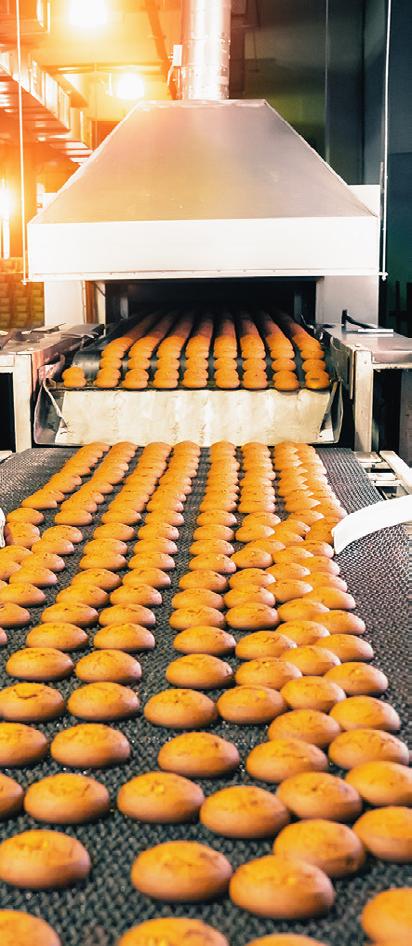

food australia 29
Grow, Learn, Connect and Champion: register now for AIFST24 AIFST24 FOOD SCIENCE NAVIGATING OUR FUTURE 06–07 AUGUST 2024 SYDNEY AIFST24 Join us in Sydney in August To Grow, Learn, Connect and Champion Visit our website for more information about AIFST24 www.aifst.asn.au
Key legal and regulatory trends for 2024

Developments have been occurring at great pace in recent years in the food industry and there is no doubt these will continue into 2024. Growing health concerns, cost of living pressures and misleading environmental claims are all catalysts for change in areas such as environmental ‘greenwashing’, marketing of unhealthy foods to children, ultra-processed foods, inflation and supply chain issues. This article summarises some of the key legal and regulatory trends that could impact the food industry in 2024.
Sustainability
The Australian Competition and Consumer Commission (ACCC) is keeping a close eye on greenwashing in 2024. Greenwashing consists of misleading or exaggerated environmental claims made by businesses. This stricter enforcement follows the release of an internet greenwashing sweep in March 2023 that revealed 57% of businesses had made concerning environmental claims.1 The ACCC is extending the scope of greenwashing to include competition law and product safety concerns, whilst continuing to focus on consumer and fair trading issues. At the end of 2023, the ACCC
released guidelines to help businesses avoid making misleading environmental claims.
The eight key principles for making trustworthy environmental claims are:
• Make accurate and truthful claims
• Have evidence to back up your claims
• Do not hide or omit important information
• Explain any conditions or qualifications on your claims
• Avoid broad and unqualified claims
• Use clear and easy to understand language
• Visual elements should not give the wrong impression
• Be direct and open about your environmental sustainability transition.2
The guidelines also provide the ACCC’s compliance and enforcement approach, and set out the legal framework which is consistent with the Australian Consumer Law.
The EU has also proposed a directive on green claims to protect consumers from greenwashing.
In March 2023, the European Commission proposed a directive to require companies to meet certain requirements to substantiate their green claims.3 The communication and labelling of explicit environmental claims must also comply with certain requirements. Deciding whether
environmental claims meet the requirements under the proposed directive will be undertaken by an accredited third-party.
These stricter requirements under the directive will cause a shift in the approach to greenwashing in the EU, and may provide a trend to follow in Australia.
Marketing of high fat, salt and sugar foods to children
The Australian Government is investing in a feasibility study on options to limit unhealthy food marketing to children. The study will provide better understanding of the options available to limit marketing of unhealthy foods, which includes foods high in fat, salt and sugar. This is in response to Australians’ diets consisting more of discretionary foods and less of core foods, leading to an increase of obesity and chronic diseases.4 The World Health Organisation’s Commission on Ending Childhood Obesity found links between unhealthy food marketing and childhood obesity, highlighting the need for action.
A public consultation (which closed on 15 March 2024) sought further evidence and recommendations for policy options regarding:
• A self-regulatory approach governed by Codes of Practice or a
30 food australia
REGULATORY
Words by Ciska de Rijk and Pippa Saunders
mandatory legislative approach
• Whether the age of a child should be under 18 or 15
• Guidance on a proposed food classification system
• Guidance on how to restrict types of media promoting unhealthy foods, and the importance of each media type, including:
- TV and broadcasting
- Online media
- Outdoor media
- Product packaging
- Sports and arts sponsorship
- Retail marketing
- Marketing direct to children. The findings from this consultation will inform the policy options recommended to government. These policies could create stricter marketing restrictions for high fat, salt and sugar foods in Australia, and thus impact the industry financially.
Ultra-processed foods
Recent news has highlighted the negative health issues linked to ultraprocessed foods. However, there is debate on whether ultra-processed foods are by definition bad, or whether it is just the overconsumption of ultra-processed foods which have the potential to be bad. Additionally, studies tend to show weak evidence of the correlation as they are often observational, failing to adequately account for other confounding factors such as body mass or socio-economic status.5 Further research is likely needed into the connection between ultra-processed foods and certain health issues, which is a trend we could expect to see more focus on in 2024.
In the UK, there have been calls for more regulation of ultra-processed foods in light of growing health concerns. The Scientific Advisory Committee on Nutrition considered ultra-processed foods at its horizon scanning meeting on 17 June 2022. The members noted the timeliness of considering this important issue given the increasing discussion and debate surrounding food processing and
Inflation and ongoing supply chain issues
Higher costs of resources and supplies globally has led to an increase in grocery prices. Economic inflation has impacted the food and beverage supply chain and forced manufacturers to adapt and thus caused prices to increase.6 Changes to food supply chains in the past few years including disruptions, flooding and increased input costs, have driven up prices at supermarkets.7 Due to cost of living concerns being at the forefront of policy makers minds, it is likely that food inflation and supply chain issues will continue to be a focus in 2024.
It has been argued whether increased supermarket prices are a direct result of global inflation or are impacted by price gouging by supermarket operators. With grocery prices contributing to the cost of living pressures, the Australian government announced on 25 January 2024 that the ACCC will conduct an inquiry into Australia’s supermarket sector.8 This inquiry will mean the ACCC can use its informationgathering powers to collect and examine supermarket pricing practices. This will provide evidence for the relationship between wholesale and retail prices and thus assist in determining the source of inflation.
What does this mean for the food industry?
Those within the food industry should watch closely for developments in any of the discussed areas. These trends could impact the industry financially and practically, and those within the industry should be ready for potential changes.
References
1. Greenwashing by businesses in Australia: Findings of the ACCC’s internet sweep of environmental claims (2023) https://www.accc. gov.au/system/files/Greenwashing%20by%20 businesses%20in%20Australia.pdf
2. Making environmental claims: a guide for business (2023) https://www.accc.gov.au/

system/files/greenwashing-guidelines.pdf
3. 'Green claims' directive: Protecting consumers from greenwashing (2023) https://www.europarl. europa.eu/RegData/etudes/BRIE/2023/753958/ EPRS_BRI(2023)753958_EN.pdf
4. Feasibility study on options to limit unhealthy food marketing to children: Policy options for public consultation (2024) https://consultations. health.gov.au/chronic-disease-and-food-policybranch/public-consultation-feasibility-study-onoptions-t/
5. SACN statement on processed foods and health - summary report (2023) https://www.gov.uk/ government/publications/sacn-statement-onprocessed-foods-and-health/sacn-statementon-processed-foods-and-health-summaryreport
6. On the Horizon: 2024 Outlook on Top Regulatory, Litigation, and Economic Issues Facing the Food and Beverage Industry https:// foodindustryexecutive.com/2023/12/on-thehorizon-2024-outlook-on-top-regulatorylitigation-and-economic-issues-facing-the-foodand-beverage-industry/
7. Australian Food Story: Feeding the nation and beyond, Chapter 5 - The supply chain (2023) https://www.aph.gov.au/Parliamentary_ Business/Committees/House/Agriculture/ FoodsecurityinAustrali/Report/Chapter_5_-_ The_supply_chain
8. ACCC to examine prices and competition in supermarket sector (2024) https://www.accc. gov.au/media-release/accc-to-examine-pricesand-competition-in-supermarket-sector
Ciska de Rijk BSc/LLB (Hons) is the founder of Essence Compliance. She specialises in legal compliance advice in all aspects of food regulation, advertising and marketing law across Australia and New Zealand. Pippa Saunders is in her final year at Otago University studying Law and Arts.
Disclaimer: This publication is necessarily brief and general in nature. It is not intended to be legal advice. f
food australia 31
health.5

The Mediterranean diet –it’s a whole lot more than olive oil
Words by Dr Evangeline Mantzioris and Dr Anthony Villani
Before you dismiss the Mediterranean Diet (MedDiet) as nothing more than an excuse to indulge in olive oil, take a closer look. With its emphasis on whole grains, fruit, vegetables, nuts and legumes, this way of eating is about so much more than just one ingredient.
The MedDiet pattern is based on the eating habits and traditional foods from the olive-growing regions of the Mediterranean basin before the mid-1960s.1 While there is no single MedDiet, it is broadly described as a plant-based dietary pattern, with lower intakes of animal protein, daily use of extra virgin olive oil (EVOO) incorporated into all meals, and an infrequent consumption of processed cereals, sweets, vegetable oils and butter.2
This dietary pattern was first noticed by a US physiologist, Professor Ancel Keys, who was on sabbatical in Italy. He noticed the distinctly different dietary pattern and the very low rates of heart disease in the community. From
these observations, he commenced the famous Seven Countries’ Epidemiological study, which was set up to explore the impact of diet and lifestyle factors on risk of heart disease.3
More than 11,500 healthy men aged 40-59 were enrolled in fifteen different cohorts across seven countries including: US, Japan, Finland, Italy, Netherlands, Yugoslavia, and Greece (Crete) where morbidity and mortality was assessed after five years. Higher death rates were linked positively to higher intakes of saturated fat, whereas a higher intake of monounsaturated fats were negatively linked with mortality.
More interestingly, the Cretan cohort had the lowest rate of heart disease and cancer, despite having the poorest economic situation, poorest health services, low education levels and the highest rates of smoking. The striking aspect was the level of fat in the Cretan diet, which was about 40% of total energy intake and significantly greater than all other countries.
This study was one of the first to
give us a hint that perhaps it was the type of fat (monounsaturated fats in olive oil), rather than the total amount of fat, that is most important for heart disease. Nevertheless, the Seven Countries Study was observational in nature, and no direct causal links could be made between the favourable health outcomes and the MedDiet.
It wasn’t until the 1990’s that this finding could be backed up by one of the first experimental studies. The Lyon Diet Heart study4 was a randomised dietary intervention study in people who had already suffered a heart-attack. It compared the benefits of following a MedDiet to the American Heart Association (AHA) diet, which was considered the ‘gold-standard’ for lowering heart disease risk at the time and was much lower in fat (~20%) compared with a MedDiet. The primary results showed that following a MedDiet, compared to the AHA Diet, was associated with a significantly lower risk of a subsequent heart attack.
Over a decade later, the PrediMed
32 food australia HEALTH & NUTRITION
Study was one of the largest experimental studies conducted in over 7,000 middle-aged and older adults (55-80 years of age) from Spain who were without cardiovascular disease, but at high risk of it (eg. they had type 2 diabetes, were a smoker or had high cholesterol).
The participants were randomised to follow an energy unrestricted MedDiet supplemented with either EVOO or with mixed nuts (almonds, hazelnuts and walnuts) or a standard low-fat diet. Over a five-year period, participants who were allocated to either of the MedDiet groups (EVOO or mixed nuts) had a 30% reduced risk of having a major cardiovascular event compared to those who followed the standard low-fat diet.5 Since this pioneering work on the MedDiet, there is now a substantial amount of evidence showing a MedDiet reduces the risk of many chronic diseases and promotes healthy ageing.6
A closer look at the MedDiet
Following on from the Seven Countries study, the definition of the MedDiet has been refined from the traditional dietary pattern that was first observed in the Cretan cohort.
Importantly however, the identity of a MedDiet is intriguing and difficult to truly define, because it varies between countries and time periods. And this makes sense given that the Mediterranean basin spans over 20 countries across Europe, Africa and Asia, each with different dietary patterns, religious beliefs and cultures. For these reasons, a single MedDiet simply does not exist.
Nevertheless, the traditional dietary pattern observed in the Cretan cohort was very high in plant foods, low in animal and processed foods, and perhaps the most defining aspect of the Cretan dietary pattern was that the sole source of fat in the diet was EVOO. Typically, between 60-80ml of EVOO would be consumed per day (per person) which was used in all forms of cooking, baking and cold food application (in salads and on bread).

There was a wide array of vegetables that were traditionally consumed, but importantly, this included the daily consumption of green leafy vegetables including spinach chicory, arugula, chard, sorrel, collards and purslane. These were eaten raw in salads or sauteed with EVOO, traditional herbs and either lemon juice or vinegar. All up, the daily vegetable intake was over 400g per day (more than four cups).
The intake of red meat was very small (one to two serves per week), with a preference for white meat over red. Anecdotally, locals often reported that they were lucky to eat meat two or three times a year (usually Easter, Christmas and Feast days). While they did have chickens, goats and sheep, they were reared to provide eggs and milk. The milk would be made into fermented dairy products
(cheeses and yoghurt) to preserve for future times. Eggs were almost always reserved to be eaten by the children or the elderly. Fish and seafood is described as being an important part of the MedDiet, however, this was dependent on their proximity to water.
An often-undervalued part of the traditional MedDiet is the very small and infrequent amount of processed food that was consumed, which not only reflected the limited availability of processed food commercially, but also that their poverty prevented them from affording what was available. Similarly, while red wine is also a feature, it was only ever consumed in small amounts, and always with meals.
Proposed health benefits of the MedDiet are also attributed to timehonoured food-related behaviours
food australia 33

including harvesting and traditional culinary techniques, frugality and conviviality, which were integral components of a traditional MedDiet. From an environmental perspective, the production of traditional foods consistent with a traditional MedDiet occurred using sustainable approaches, contributing to rural development and the preservation of biodiversity. Emphasis was placed on food preparation methods, harvesting, conservation, picking, fishing, animal husbandry, moderation of portion size, sharing and avoiding food waste.7
What nutrients in the MedDiet are responsible for the favourable benefits?
Firstly, the diet is very nutrient dense, high in anti-oxidants, vitamins, minerals, fibre and omega-3 fats. It is low in saturated and trans fats, sugar and salt. In combination, this leads to reduced oxidative stress and an improvement in the inflammatory status of the body. The higher levels of fibre lead to better gastrointestinal functioning, including improvement in the gut microbiome. Importantly, the nutritional composition of the diet lends itself to a reduced risk of chronic disease and improves quality of life.8,9
Additional factors

In Greek, the word ‘diet’ (Gk: ) means the way you choose to live your life. This includes purposeful exercise around food growing, harvesting, preparation and cooking as well as active transportation. Most of the exercise is outdoors and there
is growing evidence that this has better health outcomes (eg. improving vitamin D uptake). Eating and sharing meals with family and friends, plus adequate sleep, are also very important components of a traditional MedDiet.
Can the diet be followed in Australia?
Given the traditional MedDiet reflects the environment of Crete in the 1960’s, it is fair to ask if the diet could be followed in nonMediterranean countries and people. We have previously analysed all MedDiet intervention studies performed in Australia10 and they have all shown impressive and sustained adherence to a MedDiet intervention with improvements in several health-related outcomes including cardiovascular disease risk, blood glucose control, cognition and inflammation.
However, most studies had quite intensive support in place to help facilitate adherence. These included regular contact via one-on-one personalised dietary prescription and nutrition counselling, written resources (recipes, daily/weekly meal plans, shopping lists, label reading information), cooking classes, information sessions, pre-prepared meals and the provision of key ‘staple’ foods such as EVOO, nuts and legumes. Encouragingly, in the studies that had follow-up periods, many of the participants reported sustained adherence to a MedDiet, even after the intervention and supportive adherence strategies had ceased.
Conclusions
The MedDiet has been described similarly for several decades, however, the traditional MedDiet was first observed in Crete in the early 1960s. Following this dietary pattern has been shown to reduce the risk of many chronic diseases, improve health-related quality of life and help support healthy ageing.
Although the basic principles of following a MedDiet can be achieved in non-Mediterranean countries such as Australia, additional support from an Accredited Practising Dietitian will help adapt a Mediterranean-style diet to individual socioeconomic, health circumstances and taste preferences.
References
1. Keys, A. (1995) “Mediterranean diet and public health: Personal reflections.” American Journal of Clinical Nutrition 1995, 61, 1321S–1323S
2. Willett, WC, et al. (1995) “Mediterranean diet pyramid: A cultural model for healthy eating.” American Journal of Clinical Nutrition, 61, 1402S–1406S
3. Keys, A. et al. (1986) “The diet and 15-year death rate in the Seven Countries Study.” American Journal of Epidemiology, 124:903–15
4. de Lorgeril, M, et al. (1999) “Mediterranean diet, traditional risk factors, and the rate of cardiovascular complications after myocardial infarction: final report of the Lyon Diet Heart Study.” Circulation, 99:779–785
5. Estruch, R, et al. (2018) “Primary Prevention of Cardiovascular Disease with a Mediterranean Diet Supplemented with Extra-Virgin Olive Oil or Nuts.” New England Journal of Medicine, 378:e34
6. Dinu, M, et al. (2018) “Mediterranean diet and multiple health outcomes: An umbrella review of meta-analyses of observational studies and randomised trials.” European Journal of Clinical Nutrition, 72, 30–43
7. Donini, LM, et al. (2015) “The Mediterranean Diet: Culture, health and science.” British. Journal of Nutrition, 113, S1–S3
8. Schwingshackl, L, et al. (2015) “Effects of olive oil on markers of inflammation and endothelial function—A systematic review and metaanalysis.” Nutrients, 7, 7651–7675
9. Trichopoulou, A, et al. (2014) “Definitions and potential health benefits of the Mediterranean diet: Views from experts around the world.” BMC Medicine, 12, 112.5
10. Mantzioris E, Villani A. (2019) “Translation of a Mediterranean-style diet into the Australian Dietary Guidelines: a nutritional, ecological and environmental perspective.” Nutrients, 11:2507
Dr Evangeline Mantzioris APD AccSD is the Program Director of Bachelor of Nutrition and Food Sciences at the University of South Australia and an Accredited Practicing Dietitian and Accredited Sports Dietitian.
Dr Anthony Villani APD is a Senior Lecturer in Nutrition and Dietetics at the University of the Sunshine Coast and is an Accredited Practising Dietitian. f
34 food australia HEALTH & NUTRITION
The ongoing impact of a foodborne illness
 Words by Deon Mahoney
Words by Deon Mahoney
While the consuming public has a high expectation that their food is safe, they generally have a blasé attitude to the impact of foodborne illness. That is unless a child is involved, in which case illness provokes outrage and a flurry of demands for enhanced regulations and improved oversight.
The lack of concern by adults about the consequences of foodborne illness belies the reality. The typical acute symptoms of nausea, vomiting, diarrhoea, abdominal pain and perhaps headache and fever are often passed off as being mild and a nuisance. Plus most immunocompetent individuals are able to recover in just a few days. As a result, foodborne illness events rarely receive much media attention, unless a sporting event, conference, wedding, or celebrity is involved, or if it is a massive outbreak involving large numbers of victims and hospitalisations.
Incidents of foodborne illness
In 2014, a professional sporting team of 35 players and club staff developed Salmonellosis within a 24-hour period after eating at a sports club in Sydney.1 The team doctor notified the Public Health Unit
and their investigation and action prevented further transmission and averted future outbreaks from the specific source. This episode attracted media attention and highlighted the risk to sporting teams presented by mass catering at training, events and social functions.
Another high-profile incident involved 37 patrons and one staff member who were treated for suspected food poisoning after eating an entree of rabbit, chicken and pork terrine at an Essendon Football Club lunch at the 2019 Anzac Day clash at the Melbourne Cricket Ground. The incident also attracted widespread media coverage as it involved corporate diners. While subsequent investigations were largely inconclusive, the data suggested that a quince and fig jam relish with barberries was almost certainly the cause of this outbreak.2
In 2022, Manchester United’s football team made headlines when players and staff were taken out of action by suspected food poisoning after a trip to Moldova. The incident saw up to 12 members of the team affected, with some stars forced to miss training over the weekend.
Unfortunately such incidents are not rare and may occur across the
entire community, and while the initial symptoms of the acute phase may quickly subside, they may be a precursor to a range of serious sequelae with lifelong injury or disability and even death.
The burden of foodborne illness
Food Standards Australia New Zealand recently published updated estimates of the burden of foodborne illness and their costs. The number of cases of foodborne illness was estimated to be $4.68 million per annum with a cost of $2.44 billion per annum.3 In 2023, the cost data was updated to $2.81 billion, following adjustment for inflation.
This data demonstrated the significant effect foodborne illness has on both public health and the economy. The burden represents a case of foodborne illness every nine seconds. The highest costs were associated with illness resulting from infections with Campylobacter, non-typhoidal Salmonella, pathogenic Escherichia coli and noroviruses. The published data was generated by the Australian National University and utilised expert elicitation and modelling to estimate the cost of foodborne illness and sequelae.
food australia 35 FOOD SAFETY

These costs included the burden of illness (encompassing hospitalisations, death and sequelae), the financial costs (including direct and indirect costs such as lost productivity and sick days), premature mortality and estimates of the non-financial costs associated with pain and suffering.
While the direct healthcare costs are substantial, what is not included are costs associated with product recalls, disposal of contaminated products, testing and surveillance and damage to brand reputation which impact primary producers, suppliers, processors, distributors and retailers.
Sequelae of foodborne illness
The term sequelae refers to any pathological conditions or complications that arise from a prior illness, injury or trauma to the body. With foodborne illness, sequelae refer to impairment of an individual’s health after the initial acute phase of illness has resolved. Unfortunately, in the past, chronic and latent complications were unlikely to be identified and epidemiologically linked to a foodborne illness, because such data was either sparse or not
systematically compiled.4 Plus, it is further complicated because sequelae may occur many weeks or months after the initial infection.
In recent years there has been ever-increasing awareness of the more severe and chronic health consequences following an acute infection by foodborne pathogens. This is due, in part, to the rising occurrence of foodborne illness leading to more frequent episodes of chronic health problems. The more common long-term sequelae include reactive arthritis (ReA), chronic bowel and gastrointestinal dysfunction such as irritable bowel syndrome (IBS), Guillain-Barré syndrome (GBS) and haemolytic uraemic syndrome (HUS). However, there may also be other impacts on the respiratory and immune systems, such as auto-immune thyroid disease. These sequelae seriously affect productivity, cause considerable pain and suffering and may result in premature mortality.
In their study of foodborne illness in Australia circa 2010, Ford et al estimated there were 35,840 cases of sequelae following illness caused by five major foodborne pathogens.5 This resulted in 1,080 hospitalisations,
and 10 deaths from foodborne gastroenteritis–associated sequelae. Eighty percent of these cases were due to Campylobacter spp. infection.
Major sequelae
The development of long-term chronic health effects is influenced by many factors. These include the virulence of the organism, the ingested dose, and host factors such as age, immune status, nutritional status and genetic factors. Reactive arthritis (ReA) is an immune-mediated syndrome triggered by a recent infection, resulting in joint pain and swelling which targets the knees, ankles and feet. It may also affect the eyes, skin and urinary tract. The symptoms can manifest several days or weeks after the initial infection and generally resolve within three to five months. The incidence varies from 0% to 15% after gastrointestinal infections resulting from infection with pathogens such as Salmonella, Shigella, Campylobacter or Yersinia 6 Irritable bowel syndrome (IBS) is one of the most commonly diagnosed gastrointestinal diseases. It is characterised by abdominal pain, discomfort and altered bowel habits, with constipation, diarrhoea, or both, as typical symptoms.
The physiology of IBS is complex and incompletely understood, with genetics, gut microbiome, diet and gastrointestinal infections recognised as risk factors. For example, following Campylobacter infection, patients may develop the chronic gastrointestinal symptoms of IBS. Other foodborne pathogens that have been implicated in postinfection IBS include Escherichia coli and Salmonella enterica serovar Typhimurium, as well as Clostridioides difficile, Vibrio cholerae, noroviruses and the protozoan parasite Giardia lambia. Importantly, symptoms may persist for many years following the initial infection.
Guillain-Barré syndrome (GBS) is a rare but serious illness. It involves autoimmune destruction of nerves in the peripheral nervous system
36 food australia
FOOD SAFETY
resulting in muscle weakness, loss of sensation in the legs and/ or arms, and problems swallowing or breathing. GBS is the most common cause of acute, flaccid, neuromuscular weakness and paralysis globally.
A wide range of bacterial or viral infections have been linked with GBS. Gastrointestinal or respiratory illnesses are the most common, with patients typically developing neurological symptoms around four weeks after an infection in 70% of cases.7
Infection by Campylobacter jejuni is one of the most common risk factors with around one in every 1,000 people with Campylobacter infection developing GBS in the United States, according to the Centers for Disease Control and Prevention. While the prognosis for GBS is generally good, there are patients who suffer significant disability, or even die, with one of the predictors of poor outcome being C. jejuni infection.
Haemolytic uremic syndrome (HUS) is a rare and potentially serious condition arising after a foodborne infection, usually by Shiga toxinproducing E. coli (STEC) infection. HUS arises when the toxins enter the bloodstream and damage blood vessels. Common sources of the toxic E. coli include exposure to contaminated, poorly processed, or undercooked foods and contaminated water. However only a small subset of those infected will get STEC.
The symptoms of HUS include vomiting, bloody diarrhoea, stomach pain, fever, chills and headache. This can lead to life threatening complications such as elevated blood pressure, stroke or seizures, blood-clotting problems, acute kidney damage, or coma. In about 50 percent of cases, short-term kidney replacement treatment by dialysis is necessary. Most people recover from HUS, but in some situations it may lead to life-long disability and can even be fatal.
Foods typically implicated in outbreaks of STEC infection include

hamburgers, roast beef, raw milk, unpasteurised apple juice, fermented sausage and leafy vegetables.
Other types of sequelae
While other foodborne pathogens may result in sequelae after the initial acute phase of infection, there have been only limited studies to determine the long-term expression and impact of chronic complications consistent with antecedent foodborne illness. For example, chronic sequelae such as pancreatitis, cholecystitis, colitis, myocarditis and meningitis have been reported as a consequence of salmonella infection.
Listeriosis may result in acute complications such as neurological disorders, sepsis and congenital infection, which may have longterm chronic outcomes. Likewise, acute primary infection by the protozoan parasite Toxoplasma gondii in pregnant women can have devastating sequelae leading to congenital toxoplasmosis with severe neurologic, auditory and visual disabilities. Consumers are exposed to T. gondii via the consumption of undercooked or raw meat, game meat or contaminated unpasteurised milk.
Summary
Foodborne illness is a global public health issue and can present as one of a wide spectrum of illnesses. The most common clinical presentation is acute gastrointestinal symptoms, however, longer-term chronic complications or sequelae are not uncommon.
Further studies are needed to
better understand specific pathogen/ outcome relationships and to identify means of minimising the occurrence of chronic conditions. In the meantime, preventing food contamination by pathogens, practicing hygienic handling and storage, and proper preparation of food remain the keys to reducing the burden of foodborne illness and sequelae. Such investments in food safety also guarantee significant economic gains.
References
1. Cavanagh, K. et al. (2017). Foodborne illness outbreak investigation in a high-profile sports club. Sports Medicine. DOI 10.1186/s40798-0170088-x
2. Did the relish do it? Rabbit in the clear after investigation into MCG gastro outbreak. AFL Website 2019. https://www.afl.com.au/ news/130983/did-the-relish-do-it-rabbit-inthe-clear-after-investigation-into-mcg-gastrooutbreak
3. Australian National University (2022). Annual cost of foodborne illness in Australia. Final report for FSANZ. https://www.foodstandards. gov.au/sites/default/files/publications/ Documents/ANU%20Foodborne%20 Disease%20Final%20Report.pdf
4. Lindsay, J.A. (1997). Chronic sequelae of foodborne disease. Emerging Infectious Diseases, 3, (4), pp 443-452. https://wwwnc. cdc.gov/eid/article/3/4/97-0405_article
5. Ford L. et al. (2014). Sequelae of foodborne illness caused by 5 pathogens, Australia, circa 2010. Emerging Infectious Diseases, 20, (11), pp 1865-1871. http://dx.doi.org/10.3201/ eid2011.131316
6. Cheeti A. et al. (2023). Reactive arthritis. StatPearls, https://www.ncbi.nlm.nih.gov/ books/NBK499831/
7. Shahrizaila, N. et al. (2021). Guillain-Barré syndrome. Lancet, 397, pp 1214-1228. https:// doi.org/10.1016/S0140-6736(21)00517-1
Deon Mahoney is Head of Food Safety at the International Fresh Produce Association and Adjunct Professor within the School of Agriculture and Food Sustainability, at the University of Queensland. f
food australia 37
Tackling Australia’s three million tonnes of annual fresh produce waste
Words by Melissa Smith
Fruits and vegetables are Australia’s most wasted foods. Of Australia’s annual 7.6 million tonnes of food waste, 50% of this is fresh produce1 – enough to fill the Melbourne Cricket Ground five times. Australia’s fresh produce is too good to waste. And so, End Food Waste Australia with the Australian Banana Growers’ Council, Melons Australia and the horticulture industry, have developed new action plans – and identified the nine key action areas – to reduce horticulture waste from farm to retail.
Why reduce food waste?
Reducing horticulture food waste is critical to reaching Australia’s goal of halving food waste by 20302 – in line with the United Nations Sustainable Development Goal (SDG) 12.3 –which will have positive impacts for everyone.
Reducing horticulture waste would provide billions of dollars of economic benefits,3 reduce the growing environmental impact of our food system - with 3.5% of Australia’s annual GHG emissions coming from food waste1 - and will directly help feed millions more food insecure Australians every year.4
What will it take?
Investment in and commitment to new technologies, innovation, research and collaboration are vital to the implementation of the key recommendations in this plan.
The nine key action areas identified in the plan aim to reduce fresh produce waste that occurs at every stage of the food supply chain – on farm, during transportation and manufacturing and in retail stores.5 If adopted by industry and government, these recommendations would translate to real-world interventions that enable food waste reduction
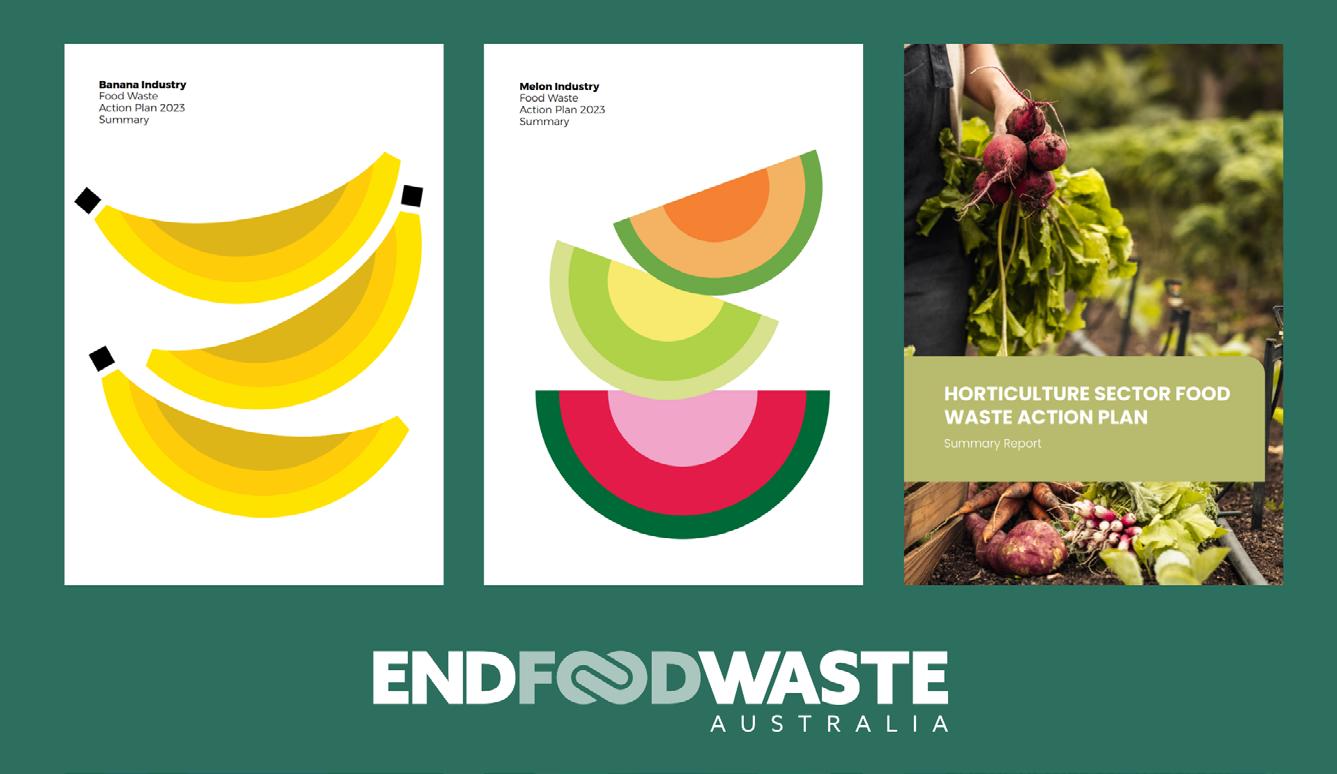
from farm to retail, prevent food waste occurring and repurpose surplus food to keep it in the food supply chain.
What will action look like?
Food waste reduction in horticulture requires getting a better grasp on the food waste challenges that exist and enabling the system to perform as efficiently as possible. These are addressed through four action areas:
1. Identifying root causes of food waste on a commodity-specific level
2. Improving food waste data and measurement, because what gets measured gets managed
3. Implementation of the right supporting policies
4. Accelerating innovation and technology solutions for food waste reduction.
These actions in practice would include auditing available digital and technological capacities of the industry, dedicated research to explore barriers of uptake of technologies and development of new apps to aid food waste reduction. It would include review, research and trials of commodity-specific onfarm food waste data measurement and reporting. It would see the
development of more productspecific food waste action plans (such as the Banana and Melon Food Waste Action Plans) and include reviewing the Food And Grocery, and Horticulture Codes of Conduct, potential development of standards and certification around food waste minimisation.
There are three key actions that focus on preventing food waste from occurring in the first place. These actions have some of the biggest cost-benefit opportunities for growers, avoiding costs of production and disposal, and helping get more produce to market:
1. Managing overproduction
2. Addressing labour shortages
3. Reviewing product specifications. These actions could include new or improved platforms and support for forecasting, improved awareness and communication across the supply chain to help create a more balanced demand and supply of fresh produce and whole crop purchasing arrangements. For the horticulture workforce, research and increased resources and education to address labour shortages and investigation of the impact of automation or AI on the horticulture workforce could also help reduce food waste. A review
38 food australia FOOD WASTE
of product specifications would include a detailed understanding of specifications and their link to food waste, supported by consumer awareness and food literacy.
Finally, increasing the opportunity for growers and suppliers to repurpose food instead of it going to waste is addressed in the final two priority action areas:
1. Support and find ways to valueadd surplus and potential waste produce
2. Supporting new and improved mechanisms to get surplus and potential waste produce to food rescue charities such as Foodbank, Ozharvest, SecondBite and FareShare.
For unavoidable surplus or potential food waste, these actions help keep fresh produce in the food supply chain. Many growers generously donate to charities, but there are currently logistic and cost barriers. A proposed tax incentive to support the costs of donation and sharing of and access to available logistics such as bins, transport and cold storage, would help get more supplies to food insecure Australians.
There are powerful examples of value-add and upcycled product creation in the market already that spotlight the opportunity available for collaboration and action on scale.
Fresh Select, with the support of CSIRO, have developed an innovative whole of vegetable solution that improves health and reduces food waste through the investment in and development of their Nutri V products. Impressively, they have seen 100% crop utilisation in many instances along with up to 15 tonnes per week reduction in pack house food waste.
They are using a drying process and in-house processing to create a range of new products, including their vegetable powders and upcycled snack ranges. They are creating new alternative markets for growers' products that otherwise would have gone to waste, while also placing a new highly nutritious product on the market to increase vegetable intake.
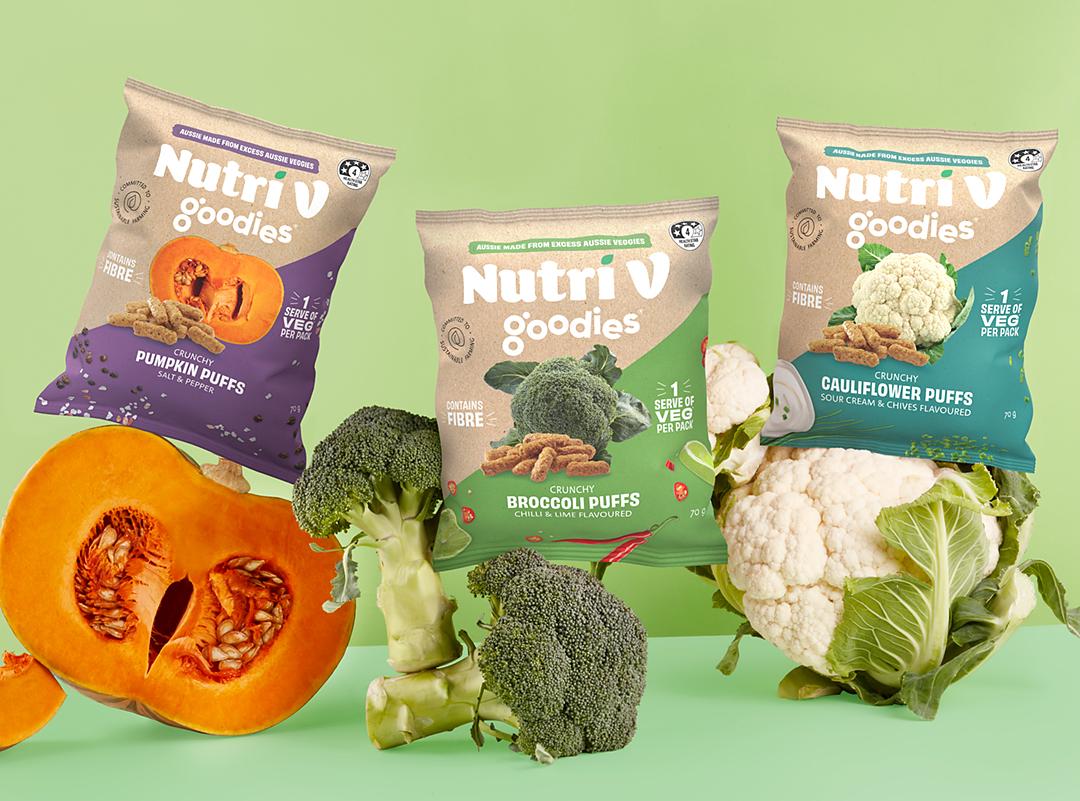
Since initial development five years ago, they have continued to grow the range of products and are now stocked in Coles stores.
This powerful example within the horticulture industry shows that the Horticulture Sector Action Plan highlights impactful, possible and profitable solutions for Australia’s fresh produce food waste.
We invite everyone across the horticulture supply chain to get involved in saving Australia’s worldclass fruits and vegetables. Food industry businesses can begin by enacting or supporting the priority actions listed in the plan and we invite other produce groups to sign up for the Food Waste Action Plan. Learn more about the Horticulture Sector Action Plan, Banana Food Waste Action Plan and Melon Food Waste Action Plan at www.endfoodwaste. com.au/horticulture
You can also learn more about this work and food waste solutions across the supply chain at the 2024 National Food Waste Summit on 24-25 July at the Melbourne Convention Centre. Learn more about the Summit at www.foodwastesummit.com.au
Ending food waste starts with us all.
Note
The Horticulture Sector Action Plan is evidence-based with research supported by the End
Food Waste Cooperative Research Centre, supported by the Australian Government Department of Industry, Science and Resources and Hort Innovation Australia, and in conjunction with Central Queensland University, Royal Melbourne Institute of Technology (RMIT), and University of Southern Queensland, with foundational funding provided by the Queensland Government.
End Food Waste Australia is leading the development of Sector Action Plans as a key tool to reduce food waste through sector-specific analysis and collaboration across the supply chain. End Food Waste Australia is supported by the Australian Government Department of Climate Change, Environment, Energy, and Water.
References
1. FIAL (2021). National Food Waste Strategy Feasibility Study
2. Australian Government (2017). National Food Waste Strategy: Halving Australia's food waste by 2030, Commonwealth of Australia.
3. Lapidge, S. (2015). Primary Production Food Losses - Turning losses into profit. South Australian Research & Development Institute, Primary Industries and Regions SA, Australia.
4. Foodbank Australia (2022). Foodbank Hunger Report
5. End Food Waste Australia (2024). Horticulture Sector Action Plan. www.endfoodwaste.com.au/ horticulture.
Melissa Smith is Horticulture Lead at End Food Waste Australia. f
food australia 39
In search of perfect biotics: from fermentation to postbiotics
 Dr C Senaka Ranadheera
Dr C Senaka Ranadheera
Fermented foods have been consumed by humans for thousands of years. The fermentation process is primarily mediated by the autochthonous microorganisms naturally occurring in food raw materials.
Although this age-old technique has initially been devoted to extending the food shelf-life for long-term storage, consumption of fermented foods for nutritional and health benefits has also been long known.1 Fermented foods provided the basis for the evolution of the modern concept of probiotics.
Fermented foods to probiotics
The concept of probiotics has been linked to the consumption of fermented foods for many years. However, at the beginning of the 20th century, after observing the regular consumption of lactic acid bacteria in fermented milk was associated with enhanced health and longevity among Bulgarians, Elie Metchnikoff, from the Pasteur Institute in Paris, gave the first scientific explanation and proposed
the concept of probiotics as it is known today.
It was later in the 1960s that Lilly and Stillwell proposed the term probiotics, the Greek meaning ‘for life’, for these beneficial microorganisms. Today, it is widely accepted that probiotics are living microorganisms that confer health benefits to the host when present in sufficient quantities of at least 106-107 cfu/ml or g of carrier food product.2
The most common way to consume probiotics is with carrier foods. However, capsules and tablets are also popular. In addition to their use by consumers, probiotics are also used in clinical settings around the world. Fermented dairy products such as yoghurts are the most common and traditional foods to carry probiotics. However, there are nondairy plant based-products such as kimchi. Research evidence suggests that the carrier food substrates can significantly influence the efficacy of probiotics when consumed.
Probiotics are most commonly represented by lactic acid bacteria, predominantly by Bifidobacterium and
Lactobacillus genera, as well as yeast, mostly of the Saccharomyces genus. Mostly, probiotics are considered as safe for consumption or generally regarded as safe (GRAS). However, safety aspects of probiotics such as their origin (human such as gastrointestinal tract or non-human including various food substrates such as milk or cheese), pathogenicity, infectivity and antibiotic resistance should be considered in the selection of probiotics for human consumption. In addition, their functional and technological characteristics should be taken into consideration. Functional aspects include maintaining their viability and persistence in the gastrointestinal tract, adhesion to gut epithelium, immunomodulation, antagonistic and antimutagenic properties.± Most importantly, sufficient numbers of live probiotics need to enter the colon and attach onto the epithelium to facilitate colonisation. In order to provide beneficial health effects for the consumer, colonisation is considered essential. Technological properties include best manufacturing
40 food australia HEALTH & NUTRITION
Words by Elena Rybakoff, Christo Opperman, Dr Hafiza Fasiha Zahid and
and food technology characteristics such as high viability retention during processing and storage, ability to scale production, sensory acceptability and phage resistance.
The health effects of probiotics are well established, with the maintenance and modulation of healthy gut microbiota being perhaps the most well known and studied characteristic.
The gut microbiome is a rich and complex environment populated with thousands of microorganisms that demonstrate a clear relationship with persons health. Gut microbiota consists of more than 1,000 species of microorganisms with a total population of approximately 1014 microorganisms. These microorganisms have a finite lifespan which is influenced by several factors, including antibiotic use, dietary habits, exposure to pathogens and interactions with the immune system. Hence, regular intake of probiotics positively influences these microorganisms and helps in establishing healthy gut microbiota. In addition, enhancement of the immune system, reduction of lactose intolerance, reduction of serum cholesterol levels and blood pressure, anti-carcinogenic activity and nutrient metabolism are among their therapeutic potentials and reported health benefits.2
The power of prebiotics
Prebiotics are functional ingredients which can withstand human digestive enzymes and stomach acid conditions. They are resistant to gastrointestinal absorption but are fermented in the colon by certain microorganisms, thus altering the composition and activity of gut microbiota and conferring benefits to the host’s health and wellbeing. Examples of prebiotic substances include inulin, fructo-oligosaccharides, galacto-oligosaccharides, soya-oligosaccharides, xylooligosaccharides, isomaltooligosaccharides, lactulose, pyrodextrins, dietary fibre, resistant starches and other nondigestible oligosaccharides.4
In the early 1920s, the possibility of altering human gut microbiota by sugars in milk was reported, indicating the ability of food components to enhance gut microbiota. Since the 1950s it has been known that certain carbohydrates encourage the growth of beneficial bacteria in the stomach.
In 1995 the prebiotic concept was first proposed by Gibson and Roberfroid. They defined prebiotics as “nondigestible food ingredients that beneficially affect the host by selectively stimulating the growth and/or activity of one or a limited number of bacterial species already resident in the colon, and thus attempt to improve host health”.5
The basic notion of prebiotics has altered numerous times over the years due to the substantial advancements in our understanding of the complexity of the gut microbiota and its interaction with the host made possible by the advent of metagenomics methods and other ‘omic’ tools.6 As per the International Scientific Association of Probiotics and Prebiotics (ISAPP), a prebiotic substance is a selectively fermented ingredient that results in specific changes in the composition and/ or activity of the gastrointestinal microbiota, thus conferring benefit(s) upon host health.
Prebiotics may be crucial to this complex system as there is mounting evidence that the gut microbiota is extensively involved in a variety of metabolic processes that go beyond the gut. In fact, a dysbiosis of the gut microbiota may be linked to the onset of some human diseases. These days, a variety of therapeutic approaches can assist in mitigating the adverse effects caused by an imbalance in the gut flora, with dietary interventions being the most popular strategy.
It has been well known that prebiotics have a physiological effect on the human colon through the production of short chain fatty acids (SCFAs), specifically propionate, acetate and butyrate, which are normally produced at a 3:1:1 ratio. Butyrate is the most significant gut metabolite among SCFAs in hostmicrobiome interactions owing
to its strong effects on a number of colonic functions, such as the induction of apoptosis, the inhibition of carcinogenesis and inflammation, the reinforcement of elements of the colonic defence barrier, and the reduction of oxidative stress.7
Lately, the gut-brain axis has received attention since it has been shown that metabolic and immunological pathways in the gut microbiota may control central nervous system homeostasis. Disturbances in the gut microbiota's composition have been linked to a number of neuropsychiatric conditions, including major depressive disorder, schizophrenia and autism.8 Due to their beneficial effects on human health, prebiotics have been extensively utilised by the food industry in a wide range of preparations, particularly, with the intention of replacing traditional ingredients with oligosaccharides. Some prebiotics, such as nondigestible carbohydrates, can improve the quality of final products in terms of texture, physicochemical characteristics, and sensory qualities by the addition of fibre and partial replacement of fats and sugars. Combining prebiotics with probiotics to boost their efficacy is known as synbiotics.
Postbiotics: the new addition to the gut health family
Recent research has unveiled alternative methods for enhancing our gut microbiome and health beyond the consumption of prebiotics or probiotics. The concept of postbiotics highlights the beneficial effects derived from the metabolic by-products of microbiota, as well as from dead cells and cellular fragments. Postbiotics are preparations of non-viable microorganisms or their components that deliver health benefits to the host.9
Postbiotics include short-chain fatty acids known for their antiinflammatory and anti-carcinogenic properties, and they have also been found to alleviate symptoms of SARS-CoV-2.10 They play a crucial
food australia 41
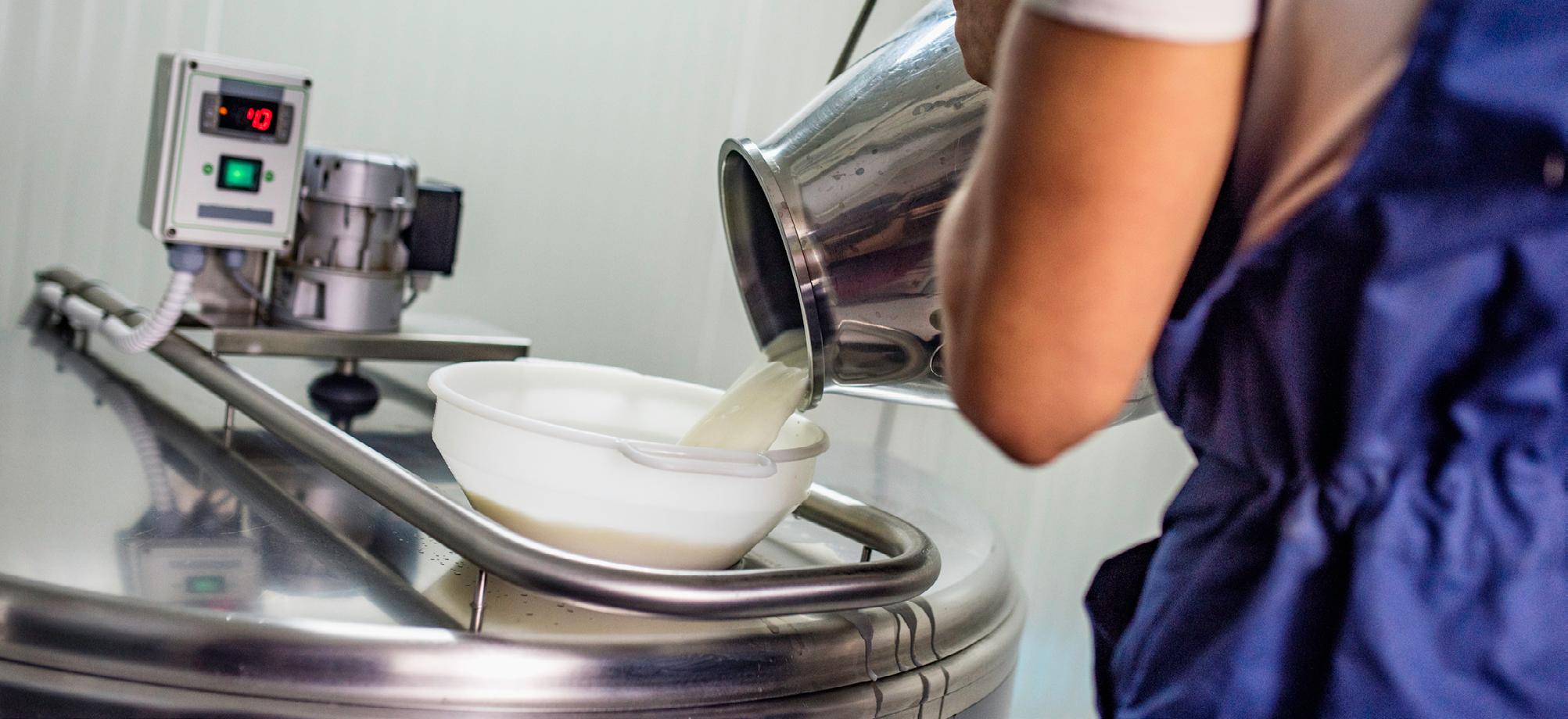
role in reinforcing the intestinal epithelial barrier, acting as a defence mechanism against the intrusion of harmful bacteria into our bloodstream. Additionally, they function as natural antibiotics, inhibiting the survival of pathogenic bacteria within the gut. Beyond the gut, beneficial bacteria and their postbiotic by-products support health on skin, mouth, and genital areas by promoting a balanced microbial environment.11
The production of postbiotics involves cultivating the microorganisms in a controlled environment, after which they can be inactivated through various methods such as enzymatic treatments, ultrasonic waves, or ultraviolet light. Alternatively, beneficial bacterial metabolites can be harvested.12
Their non-viable nature sets postbiotics apart from prebiotics and probiotics, making them suitable for use among individuals with compromised immune systems. Unlike probiotics, postbiotics do not deteriorate due to transportation or storage to the same extent nor can genetic transfer occur between bacteria. Furthermore, postbiotics can be integrated into foods to extend their shelf life, incorporated into cosmetics, and even combined with nanoparticles to precisely deliver their health-promoting components.10 However, more research into the safety and potential
clinical applications of postbiotics is required before they can be widely recommended and utilised.
Conclusions
Fermented foods provide many health benefits for consumers. The initial concept of probiotics was developed through the observation of fermented food consumption and related health evidence. Developments in probiotic research led to the prebiotic concept. Synbiotic application of probiotics and prebiotics can boost the potential of both pro and prebiotics. Postbiotics have potential for enhancing the gut microbiome and overall health beyond the consumption of prebiotics or probiotics. The exact mechanism of postbiotics, however, is an area that needs further research.
References
1. Galimberti, A., Bruno, A., Agostinetto, G., Casiraghi, M., Guzzetti, L., & Labra, M. (2021). Fermented food products in the era of globalization: Tradition meets biotechnology innovations. Current Opinion in Biotechnology, 70, 36-41.
2. Ranadheera, C. S., Baines, S. K., & Adams, M. C. (2010). Importance of food in probiotic efficacy. Food Research International, 43(1), 1-7.
3. Mattila-Sandholm, T., Myllärinen, P., Crittenden, R., Mogensen, G., Fondén, R., & Saarela, M. (2002). Technological challenges for future probiotic foods. International Dairy Journal, 12(2-3), 173-182.
4. Wang, S., Xiao, Y., Tian, F., Zhao, J., Zhang, H., Zhai, Q., & Chen, W. (2020). Rational use of prebiotics for gut microbiota alterations: Specific bacterial phylotypes and related mechanisms. Journal of Functional Foods, 66, 103838.
5. Gibson, G. R., & Roberfroid, M. B. (1995). Dietary modulation of the human colonic microbiota: introducing the concept of prebiotics. The Journal of nutrition, 125(6), 1401-1412.
6. Hutkins, R. W., Krumbeck, J. A., Bindels, L. B., Cani, P. D., Fahey Jr, G., Goh, Y. J., ... & Sanders, M. E. (2016). Prebiotics: why definitions matter. Current opinion in biotechnology, 37, 1-7.
7. Moreno, F. J., Corzo, N., Montilla, A., Villamiel, M., & Olano, A. (2017). Current state and latest advances in the concept, production and functionality of prebiotic oligosaccharides. Current Opinion in Food Science, 13, 50-55.
8. Lin, P., Ding, B., Feng, C., Yin, S., Zhang, T., Qi, X., ... & Li, Q. (2017). Prevotella and Klebsiella proportions in fecal microbial communities are potential characteristic parameters for patients with major depressive disorder. Journal of affective disorders, 207, 300-304.
9. Vinderola, G., Sanders, M. E., & Salminen, S. (2022). The concept of postbiotics. Foods, 11(8), 1077.
10. Aggarwal, S., Sabharwal, V., Kaushik, P., Joshi, A., Aayushi, A., & Suri, M. (2022). Postbiotics: From emerging concept to application. Frontiers in Sustainable Food Systems, 6, 887642.
11. Scott, E., De Paepe, K., & Van de Wiele, T. (2022). Postbiotics and Their Health Modulatory Biomolecules. Biomolecules, 12(11), 1640.
12. da Silva Vale, A., de Melo Pereira, G. V., de Oliveira, A. C., de Carvalho Neto, D. P., Herrmann, L. W., Karp, S. G., ... & Soccol, C. R. (2023). Production, Formulation, and Application of Postbiotics in the Treatment of Skin Conditions. Fermentation, 9(3), 264
Elena Rybakoff is a Masters Student in Food Science at the University of Melbourne.
Christo Opperman completed an Honours degree in Food Science at the University of Melbourne and is currently pursuing his PhD at RMIT.
Dr Hafiza Fasiha Zahid is a Research Assistant at the University of Melbourne.
Associate Professor C Senaka Ranadheera is a teaching and research academic at the University of Melbourne and heads the Probiotic Gut Health Lab. f
42 food australia
HEALTH & NUTRITION
What do Quality Assurance professionals do?
Words by Amanda Evans-Lara
Working in quality assurance (QA) in the food industry is a challenging and vital role. With the increasing importance of food safety and regulations, quality assurance professionals play a critical part in ensuring that food and beverage products are safe for consumption.
Comprehensive knowledge base
QA requires a thorough understanding of food safety principles and HACCP (Hazard Analysis and Critical Control Points). Familiarity with relevant food regulations is also crucial in ensuring that products meet the required food safety standards. Knowledge of applicable third-party standards such as BRCGS, SQF, HARPS, Freshcare, is also needed as these standards often shape the food safety and quality requirements expected by trading partners.
A deep understanding of good manufacturing practices, process improvement and root-cause analysis are also important in ensuring products are consistently produced in compliance with required standards.
Key personal attributes
QA professionals in the food industry need a variety of personal attributes to perform their roles effectively. Effective leadership and the ability to influence others are crucial in driving the adherence to regulations, food safety and quality standards within an organisation.
Effective communication and people skills are necessary for clarifying and enforcing standards and resolving issues. The QA function is required to work with all departments including maintenance and engineering, supply chain partners, customer service and production. Being adaptive to change and resilient in the face of setbacks is essential for maintaining high standards. Good organisation and
time management are key to ensuring all aspects of QA are addressed in a timely and effective manner.
Finally, being observant and detailoriented is of utmost importance in identifying any potential issues that could compromise the safety and quality of food products.
Key responsibilities
Quality assurance professionals develop and implement quality management programs, conduct internal audits, and ensure compliance with regulatory standards. Their role includes overseeing product and process quality. They play a crucial role in identifying and resolving food safety and quality issues. They conduct root cause analysis and implement corrective actions to prevent future problems. Other responsibilities include:
• Compliance monitoring: Monitoring adherence to regulatory requirements and industry standards by verifying compliance with food safety regulations, allergen control, cleanliness and pest control practices, and product labelling regulations
• Production line inspections: Identifying and resolving potential issues by verifying equipment is functioning correctly, checking for proper labelling and packaging, and ensuring products meet specifications, food safety and quality requirements
• Product sampling and testing: Ensuring raw materials, in-process samples and finished products comply with food safety and quality standards. This may involve preparing samples for laboratory analysis or undertaking sensory evaluation and physical measurements
• Standard operating procedures (SOPs): Developing and implementing detailed SOPs to establish step-by-step guidelines for various processes, such as

receiving and inspecting raw materials, storing ingredients, preparing products and maintaining equipment cleanliness
• Documentation and recordkeeping: Documenting quality control activities and test results, inspection reports, corrective actions taken and any deviations from standard procedures. This documentation provides evidence of compliance and a reference for future audits
• Continuous improvement: Reviewing and evaluating food safety and quality control procedures to identify areas for improvement. This may involve analysing feedback from customers and consumers, conducting root cause analysis for identified issues and implementing corrective and preventive actions.
The work of QA professionals is crucial in ensuring food safety and maintaining consumer trust. Quality assurance is a challenging yet rewarding role that requires a comprehensive knowledge base and a variety of personal attributes. With the right mindset and skills, you can make a significant impact in this field, contributing to the wellbeing of consumers and the success of your organisation.
Amanda Evans-Lara is a seasoned food safety compliance specialist and educator with more than 30 years’ experience in the food industry. Amanda is dedicated to sharing her knowledge and insights with others through her global HACCP Mentor platform. f
food australia 43 QUALITY ASSURANCE
Shelf-stable food manufacturing in northern Australia and the Asia-Pacific
Reduce food waste and boost regional value capture and food security
Words by Dr Warren Hunt, Dr Roger Stanley, Dr Pablo Juliano, Dr Henry Sabarez, Dr Kai Knoerzer, Dr Steve Greenland and Dr David Ompong

The remote north of Australia is characterised by a seasonally tropical monsoon environment, vast expanses, and dispersed populations reliant on extended lines of food supply. It has first world livestock, agricultural and seafood production systems, though its capabilities in food manufacturing are very limited.
Most of Australia’s food processing is located in southern regions. Long food supply chains for northern Australia encompassing 3,000 –4,000km are vulnerable to a wide range of perturbations. These include reductions in food processing output (seen in the COVID-19 pandemic) and severance of lines of supply during regional or interstate floods and fires.
As the region is heavily reliant on road transport over extended distances, any future interruptions to the national fuel supply due to international hostilities could also cause a food crisis in remote northern Australia.1-3 Long journey times also means greatly reduced shelf-life for fresh foods and increased risk of food spoilage and waste. Inadequate food storage, poor road infrastructure and limited food preservation capacity, especially for highly perishable foods, leads to food losses and inefficiencies along the food supply chain that drive up the cost of nutritious foods.4-8
Charles Darwin University hosted the Northern Australia Food Technology
was completed in 2024. Funded by the Australian Government Department of Education, Skills and Employment, it concentrated on building a case for regional value capture and food resilience capability through developing regional manufacturing of shelf-stable foods in Australia’s north.
Ambient temperature stability enables food products to be stored and distributed without reliance on a cold chain, thus reducing energy and logistics costs and increasing the resilience of the supply chain. Products thermally treated to sterility are also able to bypass most biosecurity barriers to interstate and international trade, offering increased utility and flexibility in the tropical climates of Asia and the Pacific.
Developing such a sector in the north could translate into enhanced regional value-capture, reductions in food waste, improved food safety, shortened supply chains and overall improvements in northern Australian and Asia-Pacific food security resilience. For example, around 31% of Aboriginal people living in remote areas face food insecurity.9 Another 375.8 million people in the Asia Pacific (APAC) region faced hunger in 2020.7 The United Nations’ Food and Agriculture Organisation estimates that 23% of children in the APAC region suffer from ‘stunting’ due to a lack of protein.7 The development
of local commercial scale production of shelf-stable foods could assist in addressing malnutrition issues in some parts of the region – especially where cool chain integrity is problematic.
NAFTI was dedicated to the regions of the Northern Territory and northern Western Australia (north of 20° S latitude, ie. the Kimberley region). It was premised on not competing with premium fresh food produce but instead to achieve regional value capture for out of specification or sub premium produce.
The project investigated products and markets, food science and technologies, agrifood feedstocks, appropriate food science and technologies, a capability gap analysis, and a roadmap document charting a way forward.
Markets and products
The project established that global demand for shelf-stable foods is increasing. This applies to meat, seafood and plant-based products, wet and dry product lines, and human and animal/pet consumption. Improvements in food technology and household food security concerns are likely drivers. The same applies for the APAC region. The scale of the market for shelf-stable meats and seafood in the APAC region are $US8.7 billion and $US5.5 billion respectively.10
There are considerable commercial opportunities associated with APAC countries consequent to high population growths, existing trade agreements with Australia, limited cool chain reliability amongst many parts of their populations and episodic regional food insecurity issues.
Potential shelf-stable food development opportunities identified include functional meal ingredients, snacks and convenience foods, pet
44 food australia FOOD ENGINEERING
Innovation (NAFTI) project, which
Table 1: Indicative northern Australian raw material requirements to produce target medium to high moisture low-acid foods using thermal processing.
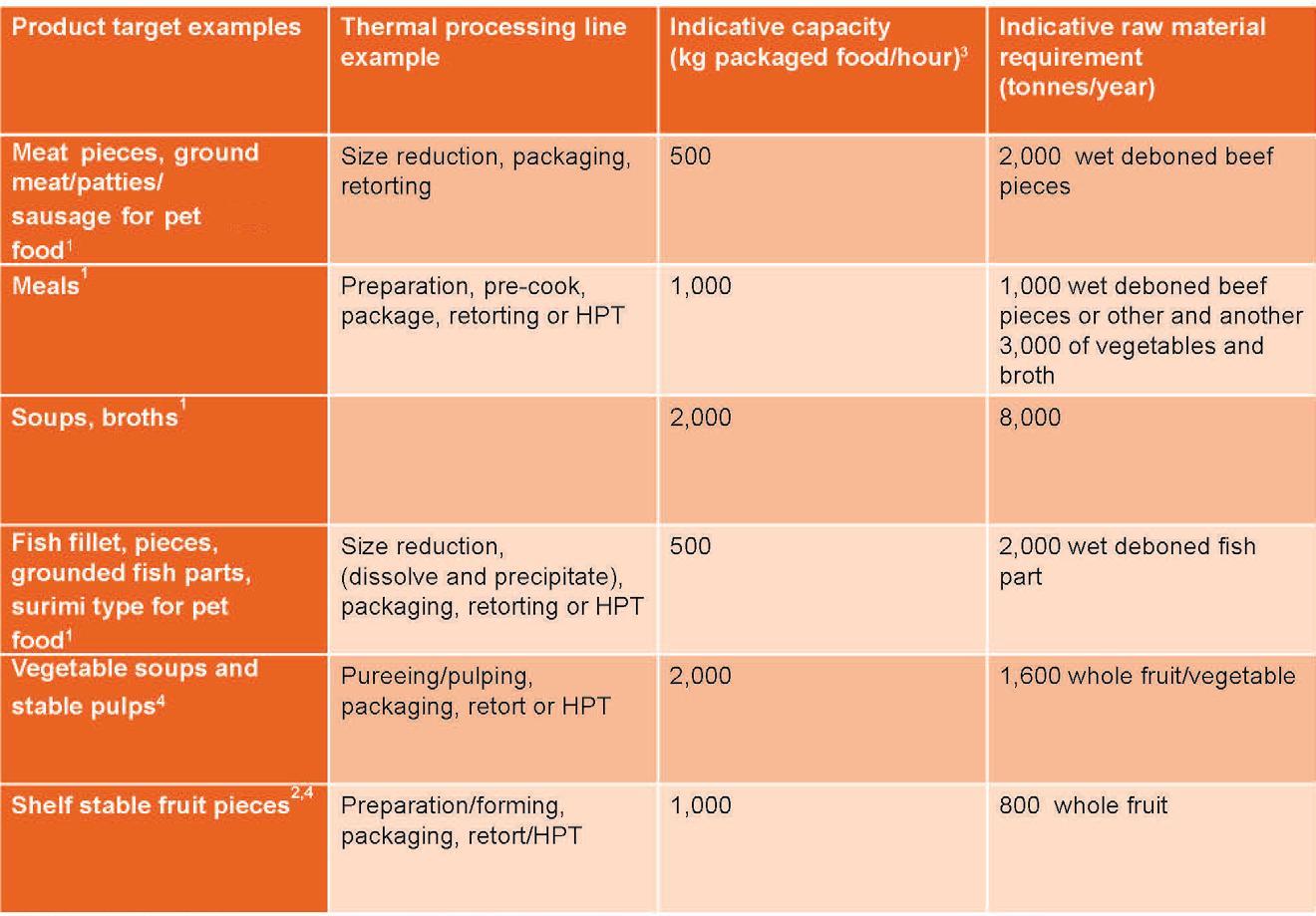
1. Assumes 200 days of operation per year at 20 h per day
2. Assumes 60 days operation per year (season), 20 h per day
3. F0 of 3 min at 121°C for inactivation of C. botulinum; for commercial sterility F value of 3xF0 = 9 min is assumed taking into account vessel loading, temperature come-up, cooling and unloading, a (conservative) total batch processing time (ts) of 30 min for broths, 60-70 min for meals and meat pieces, and 120 min for petfood is assumed. A small commercial (which is in the same ballpark as a pilot-scale) retort that is readily available is in the order of not much less than V = 2 m3; vessel filling efficiency (f) of 50% is assumed (very conservative estimate); Product density being equal to water is assumed; eg. a small commercial retort with a total batch processing time (ts) of 30 min will have a total throughput of: Vt = V[m3]*f[%]/100*60/ts[min] à unit [t/h], ie. Vt = 2*50/100*60/30 [t/h] = 2 t/h (Darian Warne and Stephen Ellis, DWC Foodtech Pty Ltd, pers. comm., 2 November, 2022).
3. For meals the assumption is that a maximum of 25% will be the meat component, this means a total throughput of 0.5 t/h of meat, while the remainder is broth, sauce, vegetables etc.; ie, for every 4 tons of final product, 1 ton of meat will be required.
4. Two-thirds of the fresh fruit and vegetable are assumed to go into the packaged food product, ie. for every 3 tonnes of final product, about 2 tonnes of fruit and vegetable will be required.
foods and snacks, health and wellbeing products and ready-to-eat meals.
Supply of feedstock for manufacturing
The Northern Territory and northern Western Australian regions host roughly 12% of the Australian national cattle herd. The focus is the out-of-specification cattle going direct to slaughter at interstate or regional abattoirs. Cattle numbers going directly to slaughter from NT and northern WA can be as high as 120,000 head per annum. This translates to around 6.1kt of ‘boned out’ manufacturing beef produced in the north, and around 8.1kt from
cattle sent to southern and east coast abattoirs. The region can also comfortably produce up to 828 tonnes of buffalo meat.
Estimates for out of specification horticultural produce in the NT and northern WA are at 29kt for watermelon, 14.5kt mango and 7kt vegetables. Seasonality of excess crop feedstock (April to December) presents challenges with storage. Processing options, such as from frozen feedstock, need to be incorporated for any future commercial manufacturing
Regarding seafood, Jew Fish swim bladders and Trepang currently feature as high-value niche opportunities. Bycatch from fin-fish fisheries could
also sustain potential commercial development. Critical to this will be learning what species and volumes of bycatch might be available as no such data is currently collected in the north.
Technologies
Estimates made by the project indicate that the aforementioned volumes of feedstock could sustain commercial processing operations. Table 1 models using minimum commercial/industrial size advanced retort systems and Table 2 models drying technologies.
Capability
The region is largely bereft of food science and engineering expertise to support development, as well as the essential integrated advanced infrastructure. The latter would need to be developed from a green-field position and the expertise imported and embedded locally. Collaborating with a national network of expertise in the food technology space would be essential. Fortunately, there is a robust supply of trade and construction sector skills in the region, with many skills transferable to supporting the development and servicing of a facility.
The roadmap to development – a pilot facility
Development of advanced food manufacturing in the north of Australia requires de-risking in the first instance and governments likely have a role in this. The collective economic and human capital investments required are daunting for regional agrifood enterprises to shoulder unilaterally and governments arguably have a role in this space. Estimates for standing up and equipping an integrated facility with several pilot lines of technologies is in the vicinity of $20 million and a budget for start-up and early operations need also be considered.
The Food Innovation Precinct Western Australia (FIPWA) model in the Peel region south of Perth offers a proven strategy towards fostering industry innovation to drive business growth with assisting entrepreneurship in developing new food products and testing their market acceptance.
food australia 45
Table 2: Indicative northern Australian raw material requirements to produce target low moisture shelf-stable foods using selected drying technologies.

1. Assumes 200 days of operation at 20 h per day
2. Assumes 60 days operation per year (season), 20 h per day
3. Minimum raw material requirement estimated based on the throughput for a single dryer of minimum commercial/industrial size, assuming further raw material conversion factors, 42/3 of the fresh fruit are assumed to go into the packaged food product.
FIPWA is positioned with local government under a joint venture with the State and Commonwealth Governments. Additionally it has associated skills and research capabilities through having Murdoch University engaged with the food science and technology aspects of operations.
There is no direct private sector investment in the establishment from from either primary industry or food manufacturers and it is viewed as an incubator environment dedicated to de-risking the advanced food manufacturing space. A similar model has utility for the Northern Territory.
Conclusion
There is a case for strengthening the food manufacturing capability of northern Australia and the APAC regions to boost food security and economic outputs. Regionalised food processing capability can put a floor in the market for sub-premium and out-of-specification produce and achieve additional value-capture in the northern Australian agrifood space. Shelf stable food production
increases supply chain resilience and lowers logistic costs. Demand for shelf-stable foods is growing across developed and underdeveloped economies, with strong signals in the APAC region. Northern WA and the NT have an abundance of lower-value and out-of-specification production across the red meat, horticulture and seafood sectors that could provide feedstock for future commercial-scale manufacturing.
The agenda is to initially develop a small-scale food-grade plant in the Darwin region to undertake precompetitive product development and market testing and build regional capability in food manufacturing.
References
1. Commonwealth of Australia, (2020) Royal Commission into national natural disaster arrangements, 28 October (ISBN: 978-1-92109146-9). Australian Government. Retrieved on 1 May 2022 from https://naturaldisaster. royalcommission.gov.au/system/files/2020-11/ Royal%20Commission%20into%20National%20 Natural%20Disaster%20Arrangements%20 https://naturaldisaster.royalcommission.gov. au/system/files/2020-11/Royal Commission into National Natural Disaster Arrangements - Report [accessible].pdf%20Report%20%20 %5Baccessible%5D.pdf
2. National Food Institute (NFI), (2020) 5 Ways COVID-19 is affecting Food Processing in
Victoria. Retrieved 18 February 2022 from https://nationalfoodinstitute.com.au/nfi/5-wayscovid-19-is-affecting-food-processing-in-victoria/
3. Parker, R., & Stewart, J., (2014). Energy and Food Security: Is Australia Fragile or Resilient? Security Challenges, 10 (1), 51-64.
4. Vermeulen, S., Campbell, B., & Ingram J. (2012) Climate change and food systems. Annual Review of Environment and Resources, 37, 195-222. https://doi.org/10.1146/annurevenviron-020411-130608
5. Bask, A., & Rajahonka, M. (2017) The role of environmental sustainability in the freight transport mode choice: A systematic literature review with focus on the EU. International Journal of Physical Distribution and Logistics Management, 47(7): 560-602. https://www. emerald.com/insight/content/doi/10.1108/ IJPDLM-03-2017-0127/full/html
6. Food and Agriculture Organisation of the United Nations (FAO), (2018) The future of food and agriculture: Alternative pathways to 2050. (ISBN 978-92-5-109551-5), FAO. Rome, Italy. Retrieved on 4 July, 2022 from http://www.fao.org/3/ i6583e/i6583e.pdf
7. Food and Agriculture Organisation of the United Nations (FAO), (2021) Asia and the Pacific, Regional Overview of Food Security and Nutrition. Bangkok, 2021. Retrieved on 9 September, 2023 from https://www.fao.org/3/ cb7494en/cb7494en.pdf
8. Guest, M. (2023) Tech-enabled supply chains will drive food security, sustainability. Food and Drink Business. Retrieved 13 June 2023 from http://www.foodanddrinkbusiness.com.au/news/ tech-enabled-supply-chains-will-drive-foodsecurity-sustainability?utm_medium=email&utm_ campaign=FDB%20-%20Newsletter%20-%20 14%20June%202023&utm_content=FDB%20 -%20Newsletter%20-%2014%20June%20
9. Australian Bureau of Statistics (ABS), (2015) Food security, Australian Aboriginal and Torres Strait Islander Health Survey: Nutrition Results - Food and Nutrients, 2012-13. Australian Government.
10. Euromonitor (2022) Processed Meat. Seafood and Alternatives to Meat in Asia-Pacific Datagraphics – November, 2022.
Dr Warren Hunt is Manager Agricultural Policy & Analysis Strategy and Policy Group, Department of Industry, Tourism and Trade, Northern Territory.
Dr Roger Stanley is Professor of Food Science & Technology in the Tasmanian Institute of Agriculture, University of Tasmania, University of Tasmania.
Dr Pablo Juliano is Group Leader Food Processing and Supply Chains, Agriculture and Food, CSIRO.
Dr Henry Sabarez is a Principal Research Scientist at CSIRO.
Dr Kai Knoerzer is a Principal Research Scientist/Engineer in the Food Innovation team at the CSIRO Food Innovation Centre and Science Strategist at CSIRO Company Creation.
Dr Steve Greenland is a Professor in Marketing and is the Associate Dean of Research in the Faculty of Arts and Society at Charles Darwin University.
Dr David Ompong is a Lecturer in the Faculty of Science and Technology, Engineering at Charles Darwin University. f
46 food australia
FOOD ENGINEERING











Take your career to the next level

The AIFST CPD program is designed to empower you with the knowledge and skills necessary for success in the ever evolving agrifood industry.

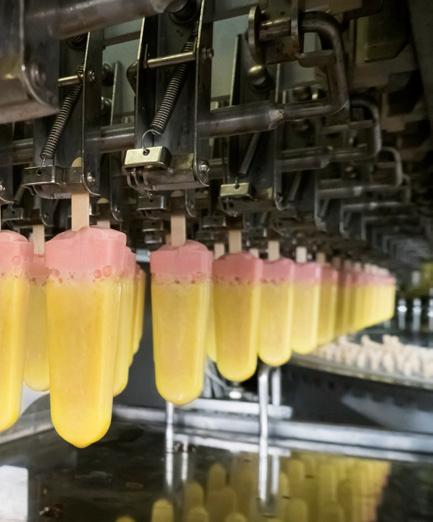



How do I get involved?
To be a part of the CPD Program, you just need to be an AIFST member.
Look out for events and education opportunities offering CPD points.
Visit the AIFST website for more information.

Unlock your
empower excellence
potential,
CHAMPION LEARN GROW CONNECT Contact us today! www.aifst.asn.au aifst@aifst.com.au CONTINUING PROFESSIONAL DEVELOPMENT
ADVANCED FOOD SAFETY COURSES
2024
Our entire range of training courses can be structured to suit your organisation. We offer training as a public classroom, virtual with a trainer or in-house.
All of our training is delivered as a structured classroom discussion. It’s how adults learn best – through listening and telling stories.
QMS Audits Training is a Registered Training Organisation (No. 45344).

HACCP Principles & Applications (Day 1&2)
Advanced HACCP (Day 3&4)
3 x HACCP Refresher Courses
Food Microbiology - Techniques & Analysis
BRCGS
SQF
VITAL Allergen
Internal Auditor – Food Safety
Lead Auditor NFSA/Exemplar/Nat. Accredited
Cook Chill incl. 2 onsite audits
Food Safety Culture
Freshcare
ISO 9001, ISO 14001 and ISO 45001





TRAINING ACCREDITATIONS
OU R 2 0 24 C OURSE L INE- U P I NC L U D ES
BOOK ONLINE OR CALL US TODAY qmsaudits.com.au | 1300 404 505




























































































 Words by Dr Louise Bennett and Dr Mary Ann Augustin
Words by Dr Louise Bennett and Dr Mary Ann Augustin












 Words by Dr Kathryn Speer, Dr Andrew McKune and Dr Nenad Naumovski
Words by Dr Kathryn Speer, Dr Andrew McKune and Dr Nenad Naumovski
















 Words by Deon Mahoney
Words by Deon Mahoney




 Dr C Senaka Ranadheera
Dr C Senaka Ranadheera




























